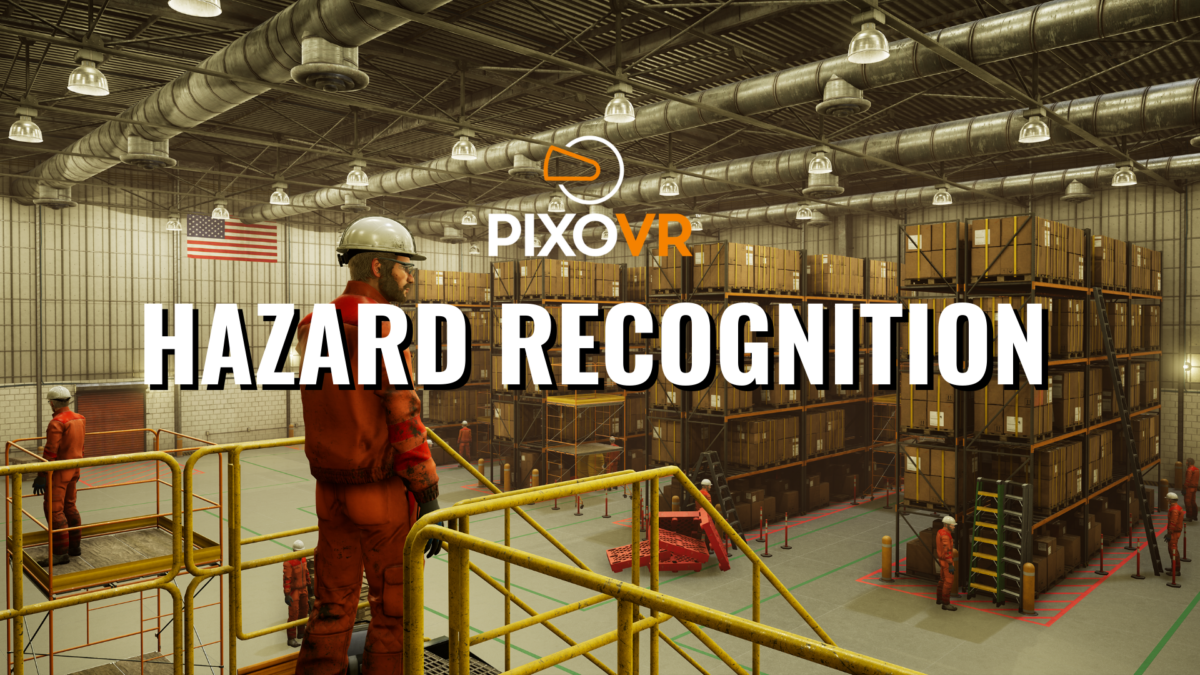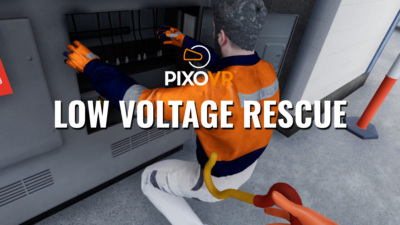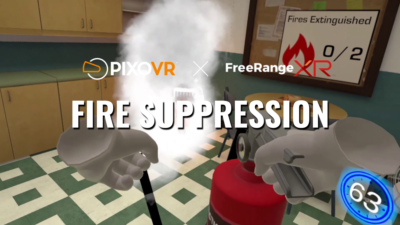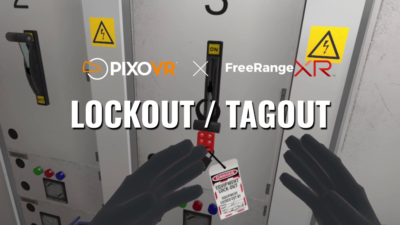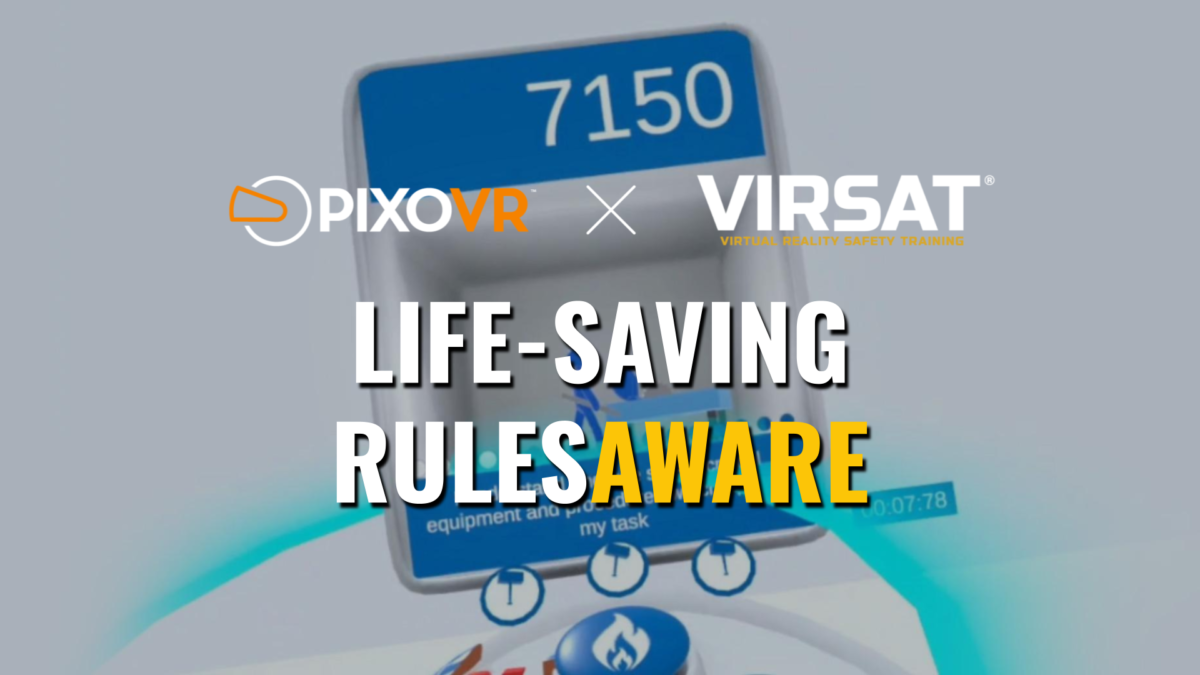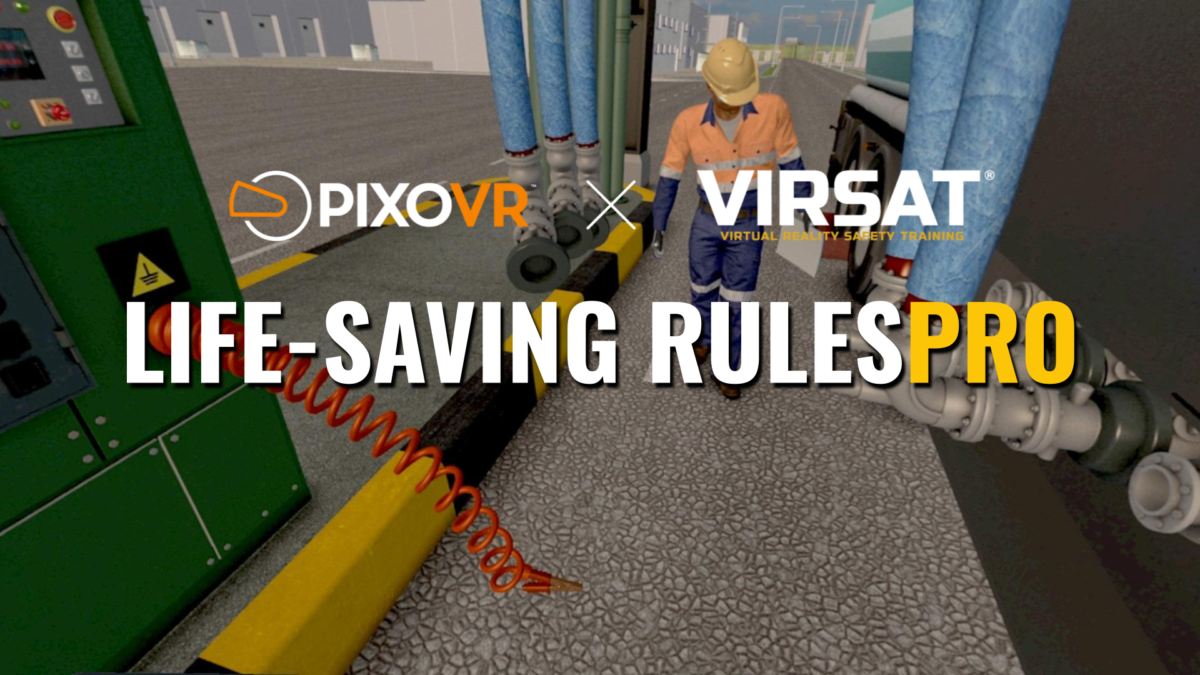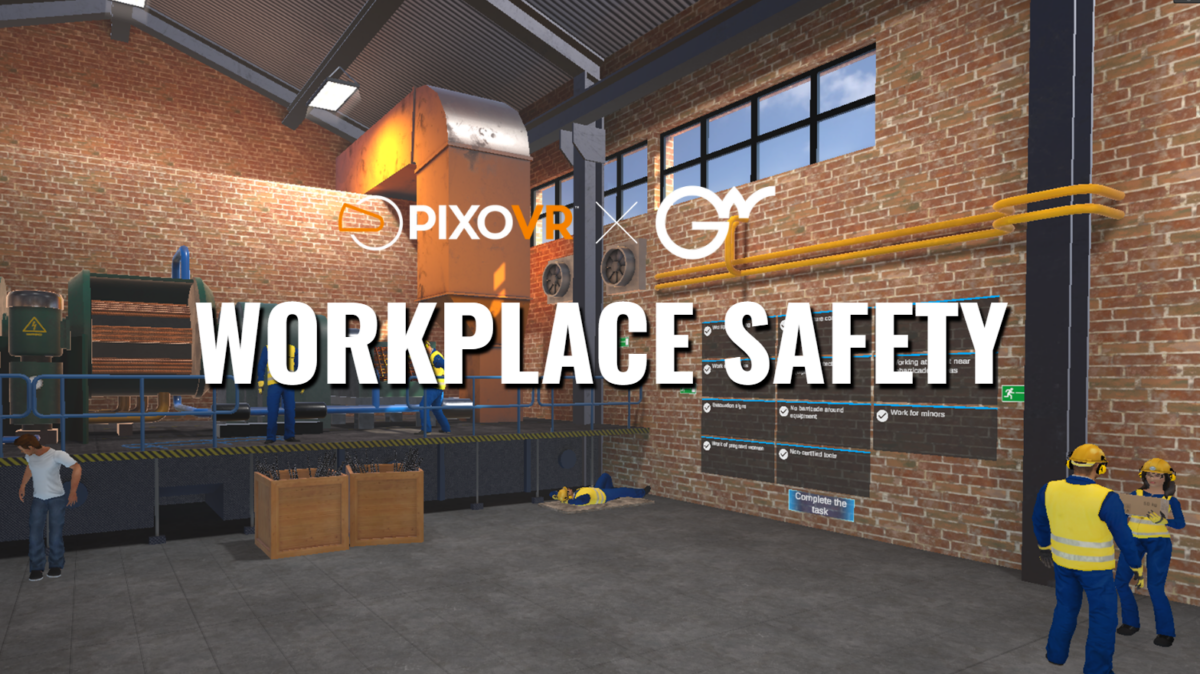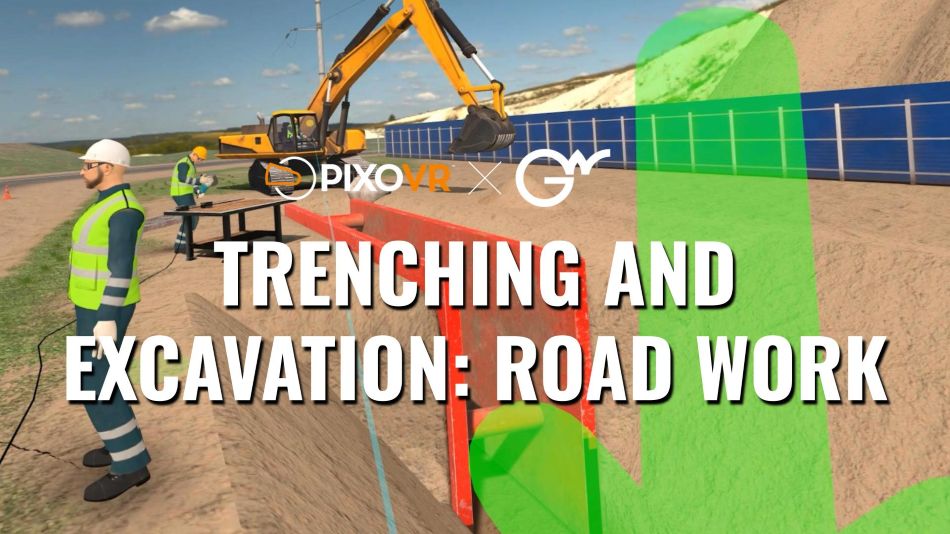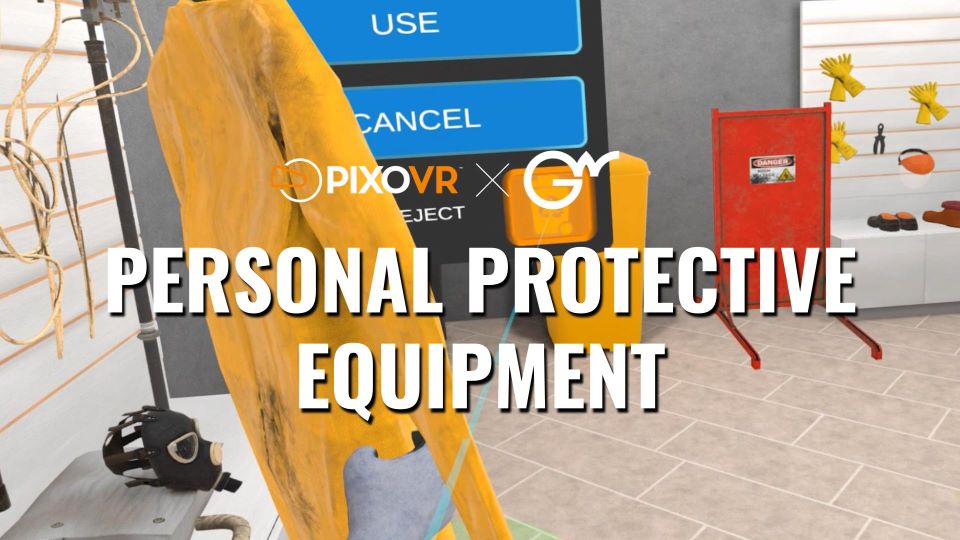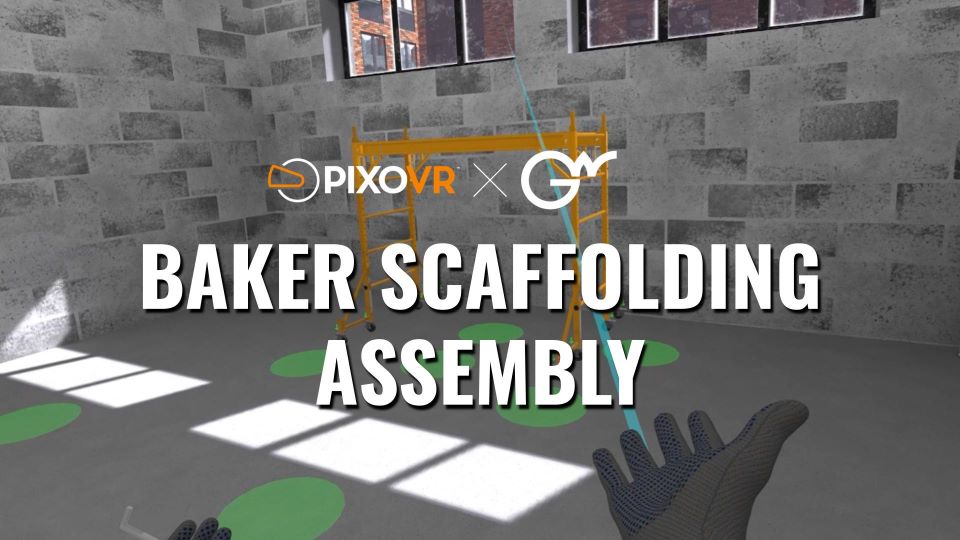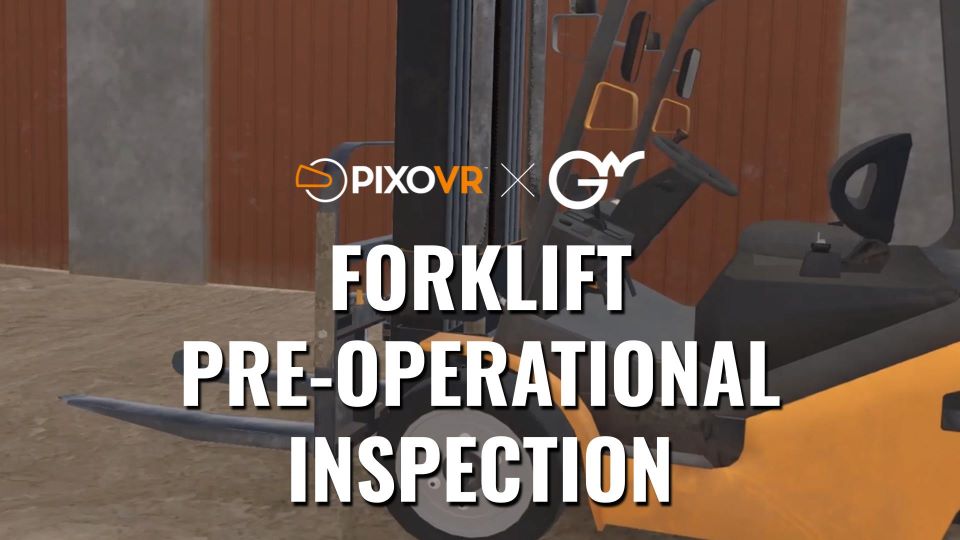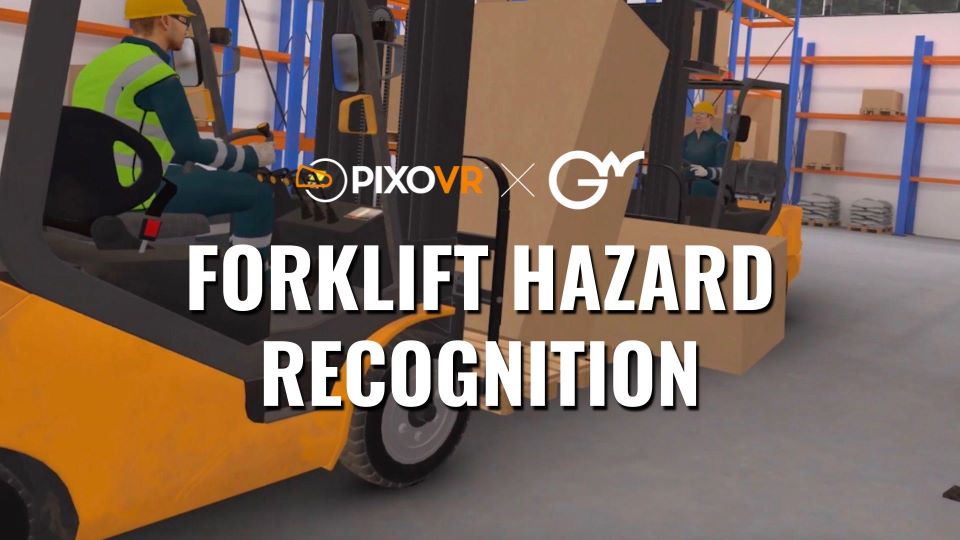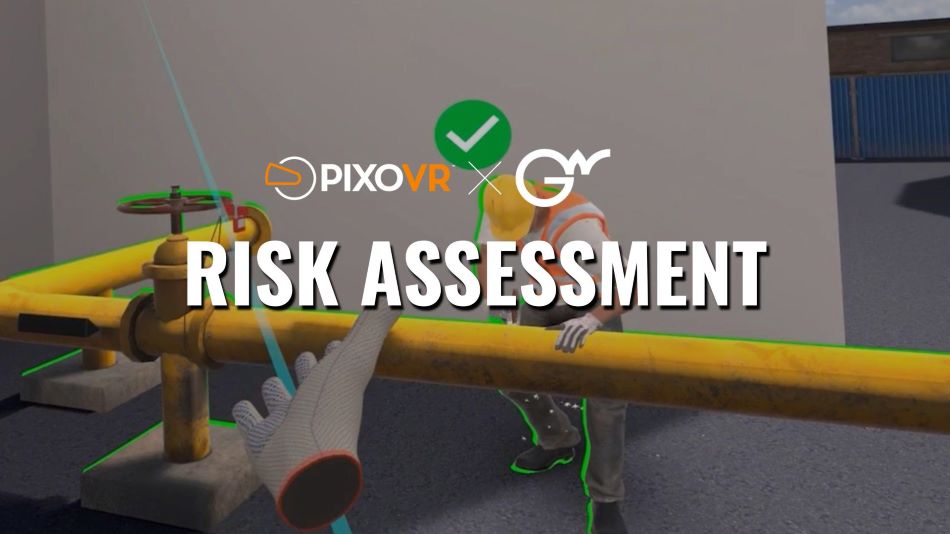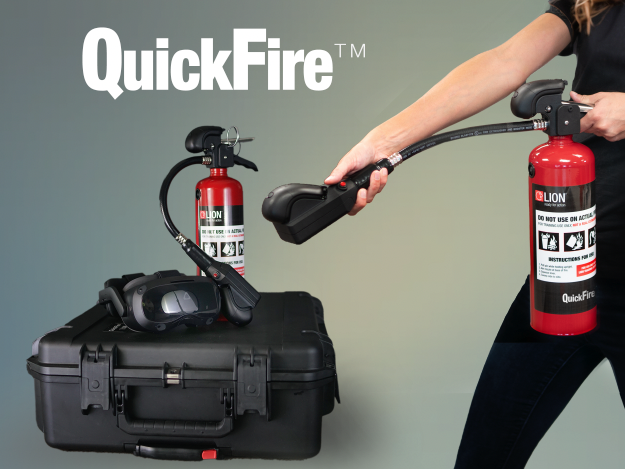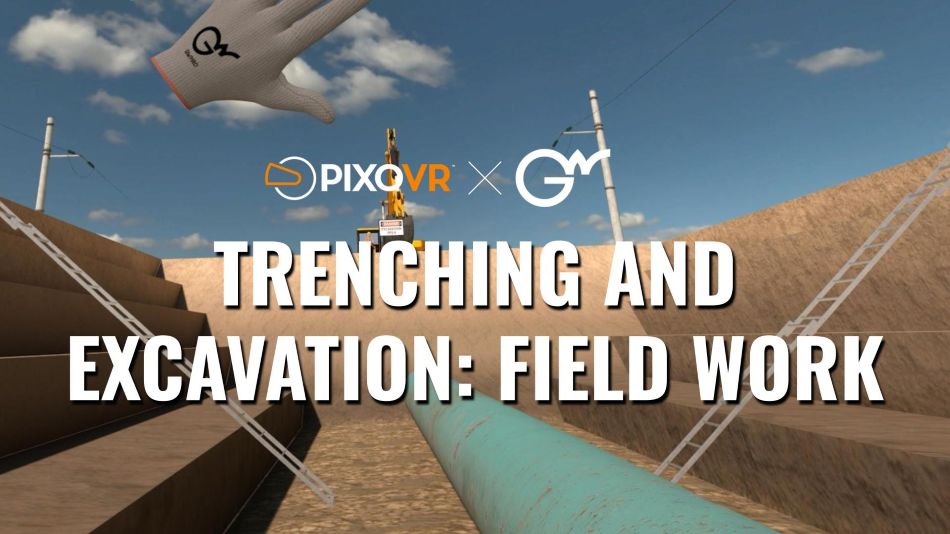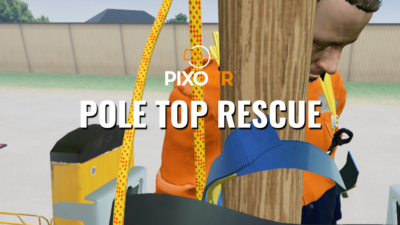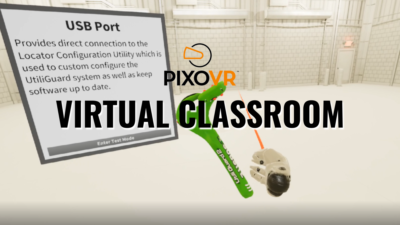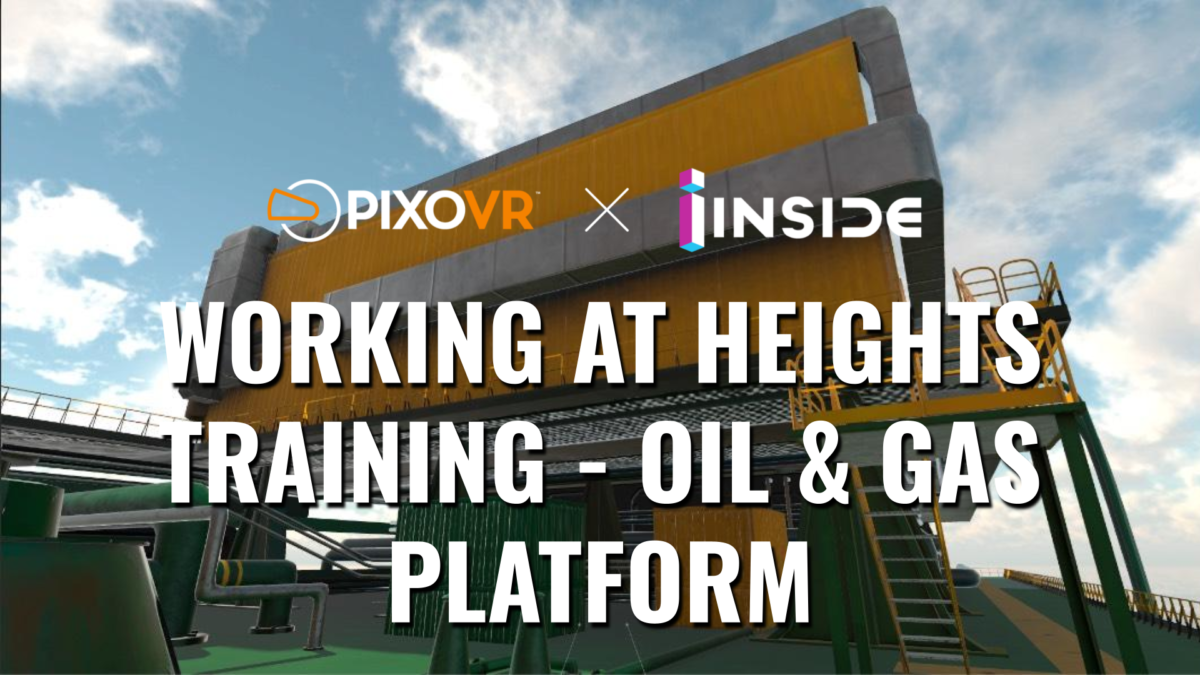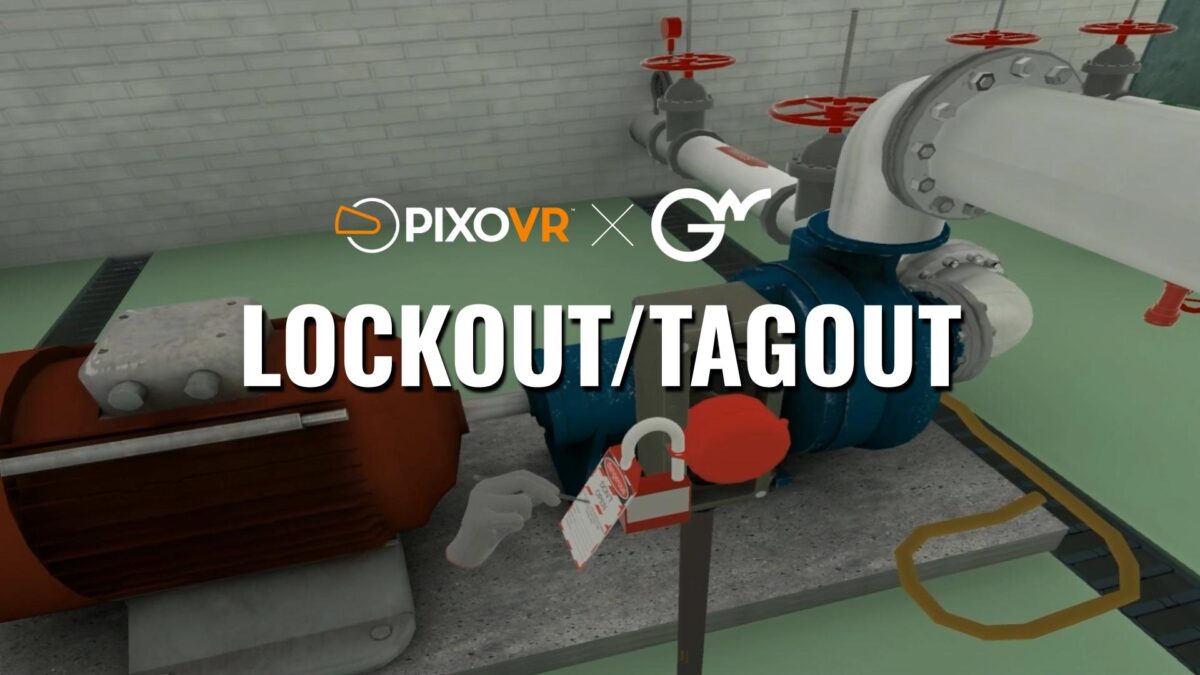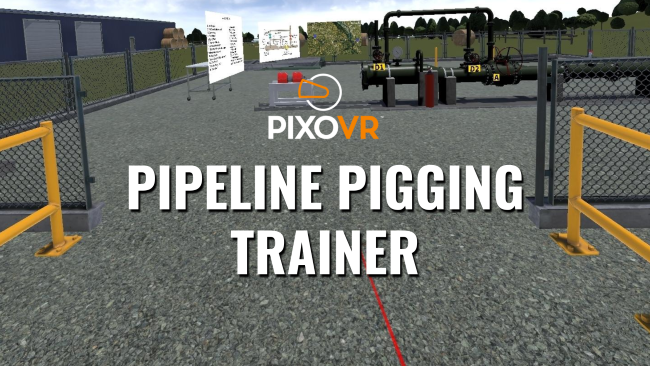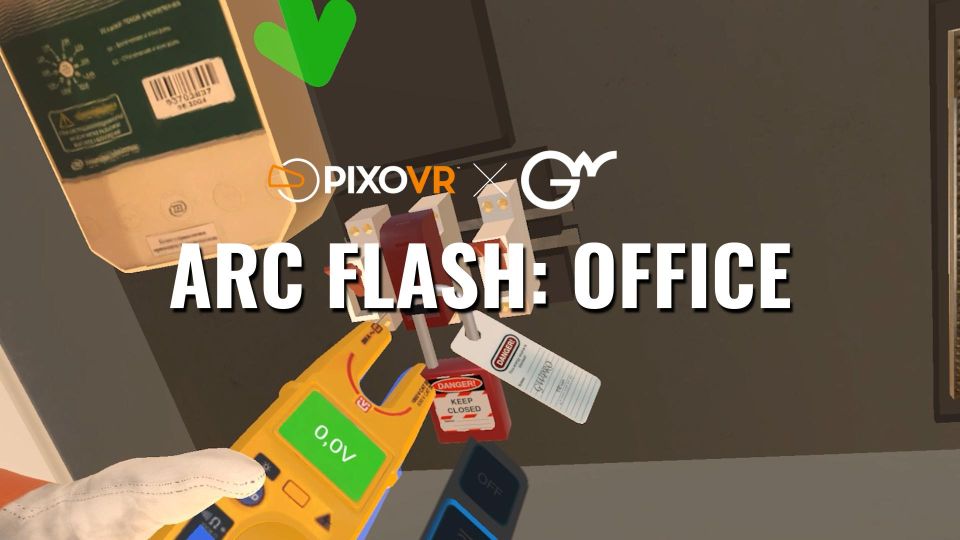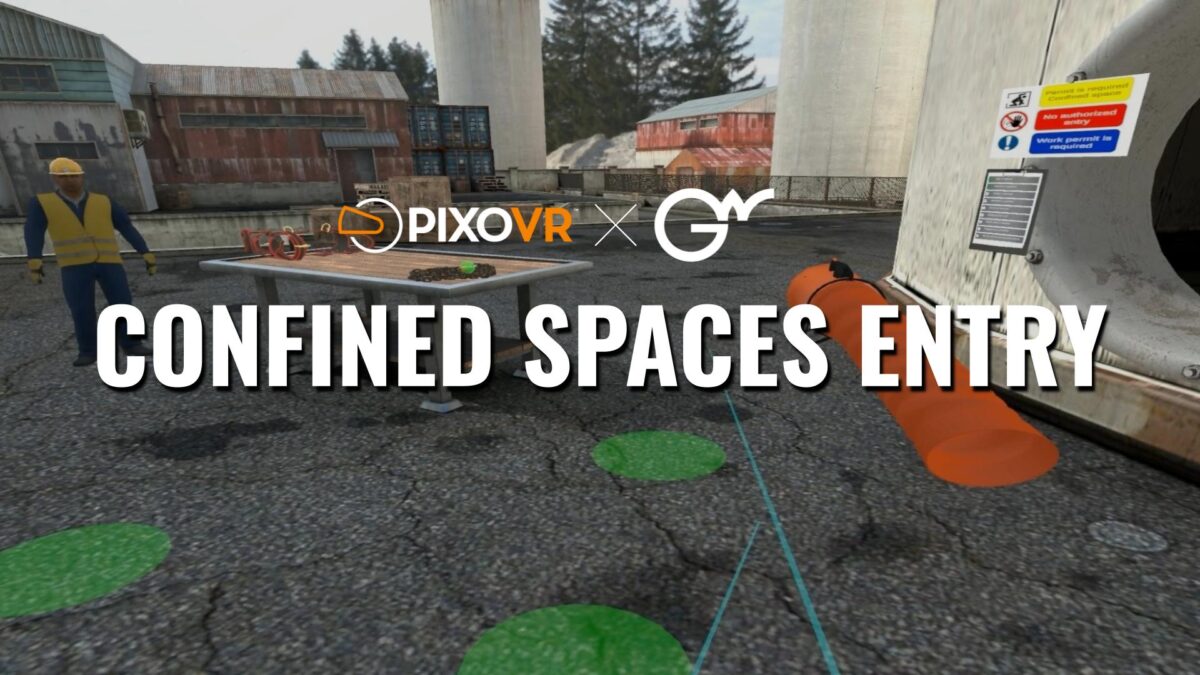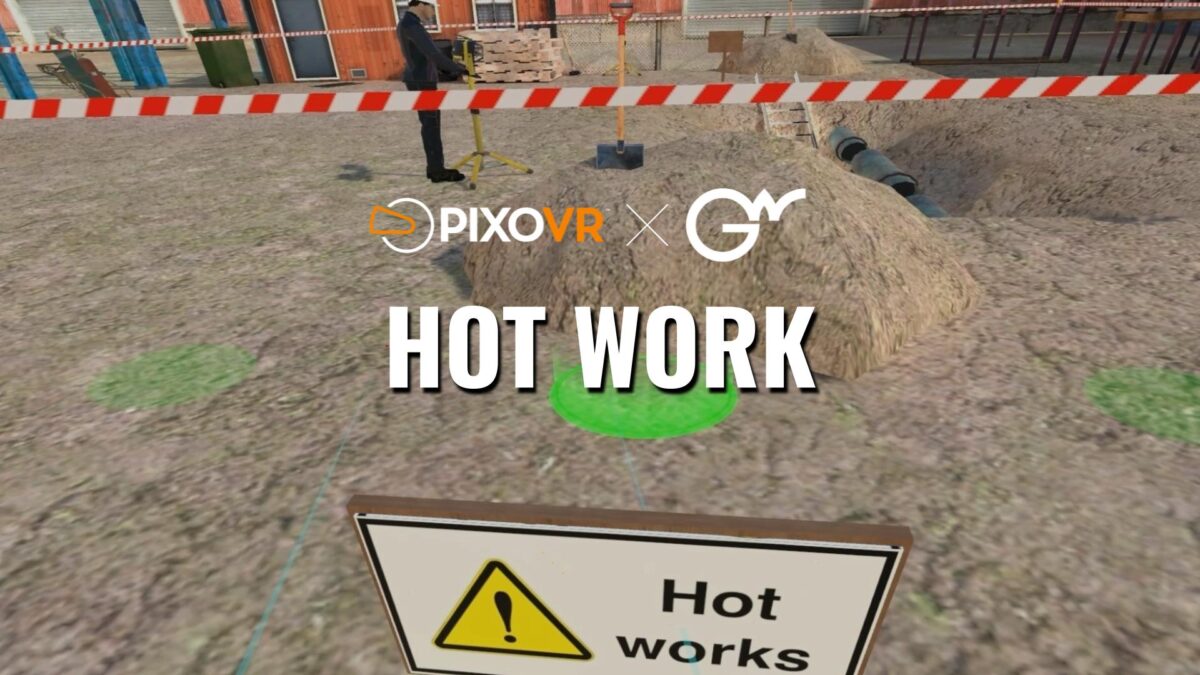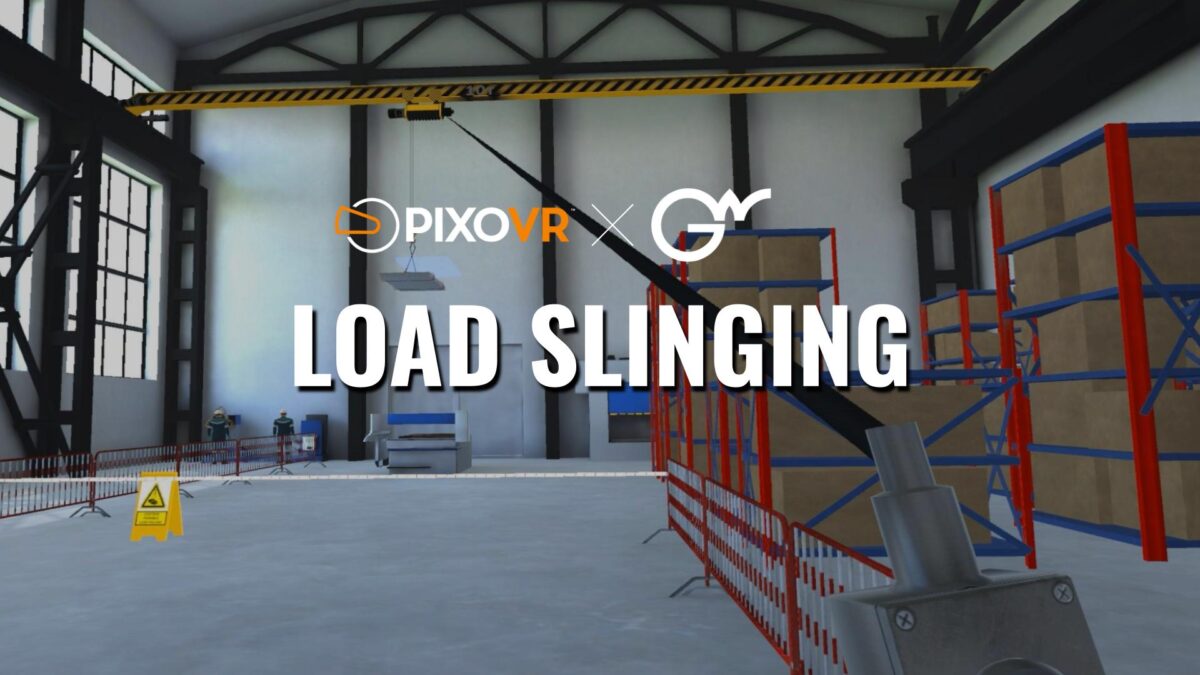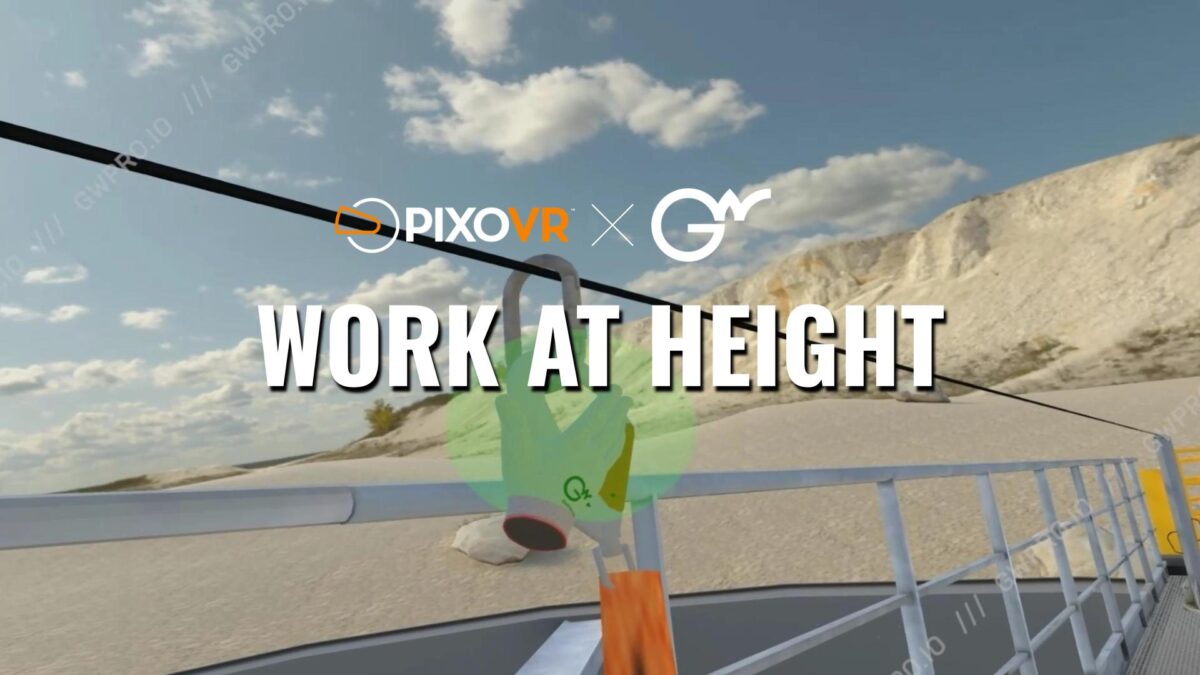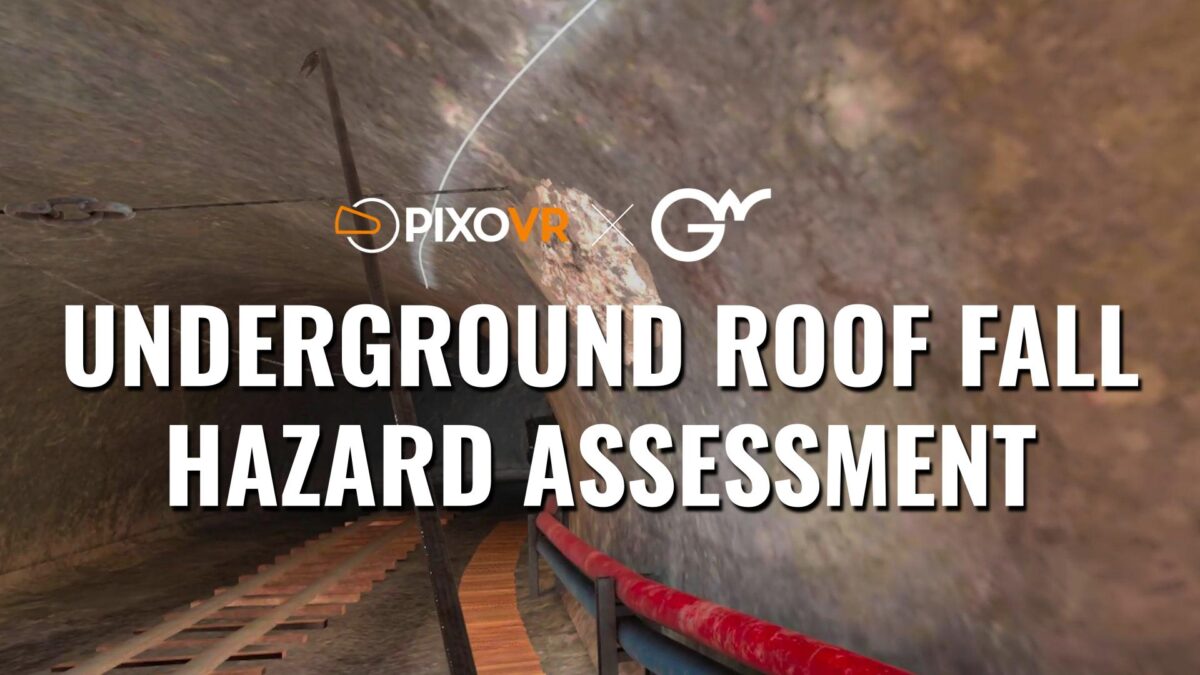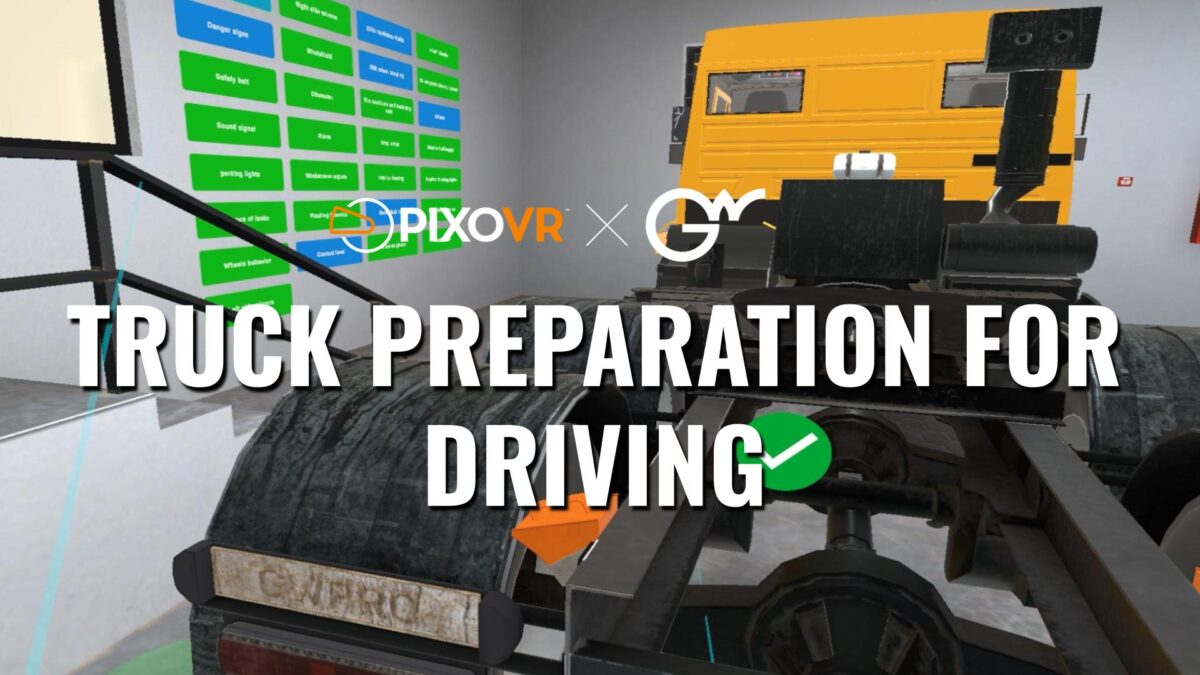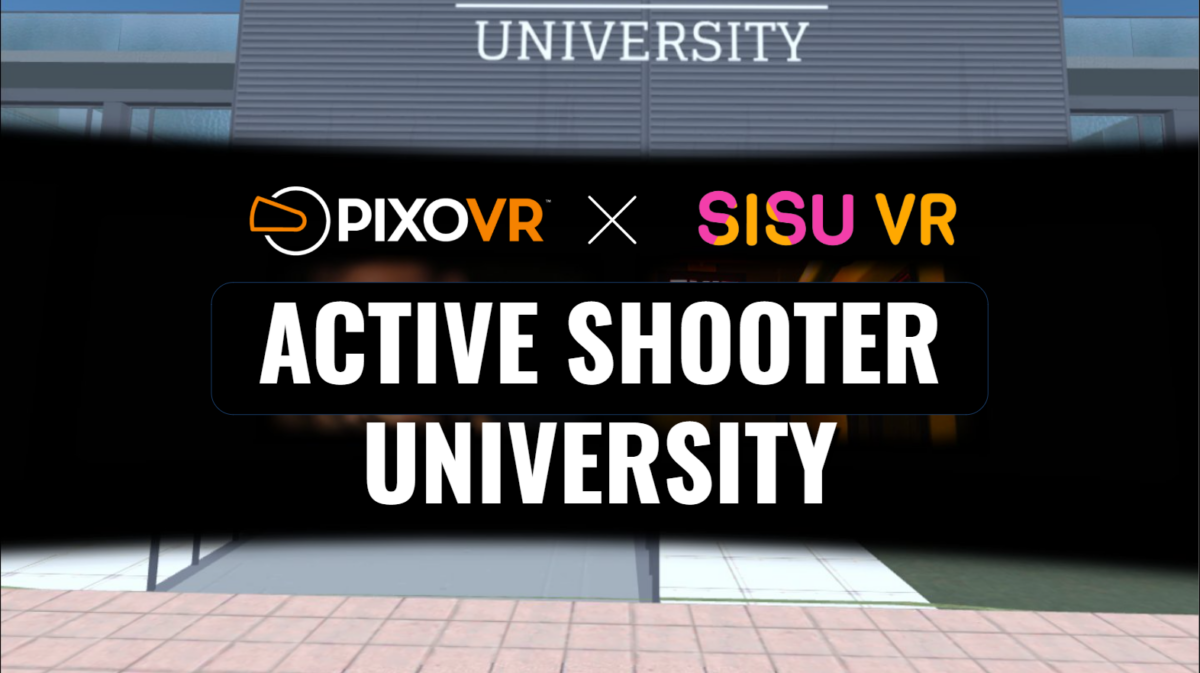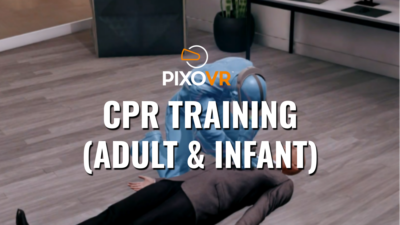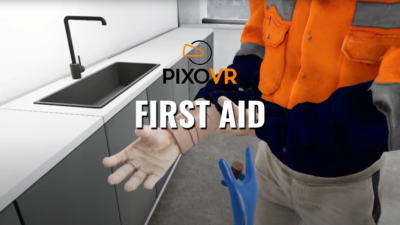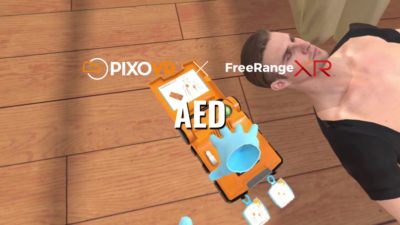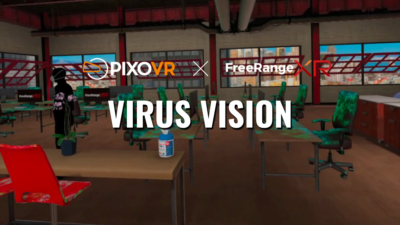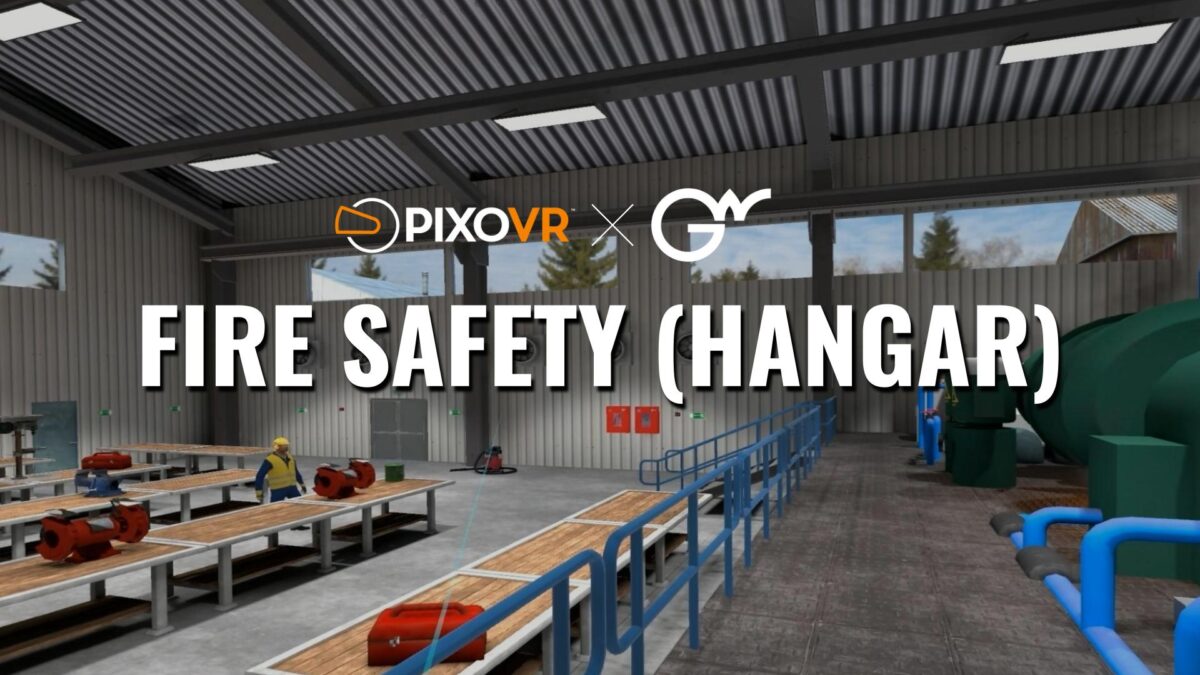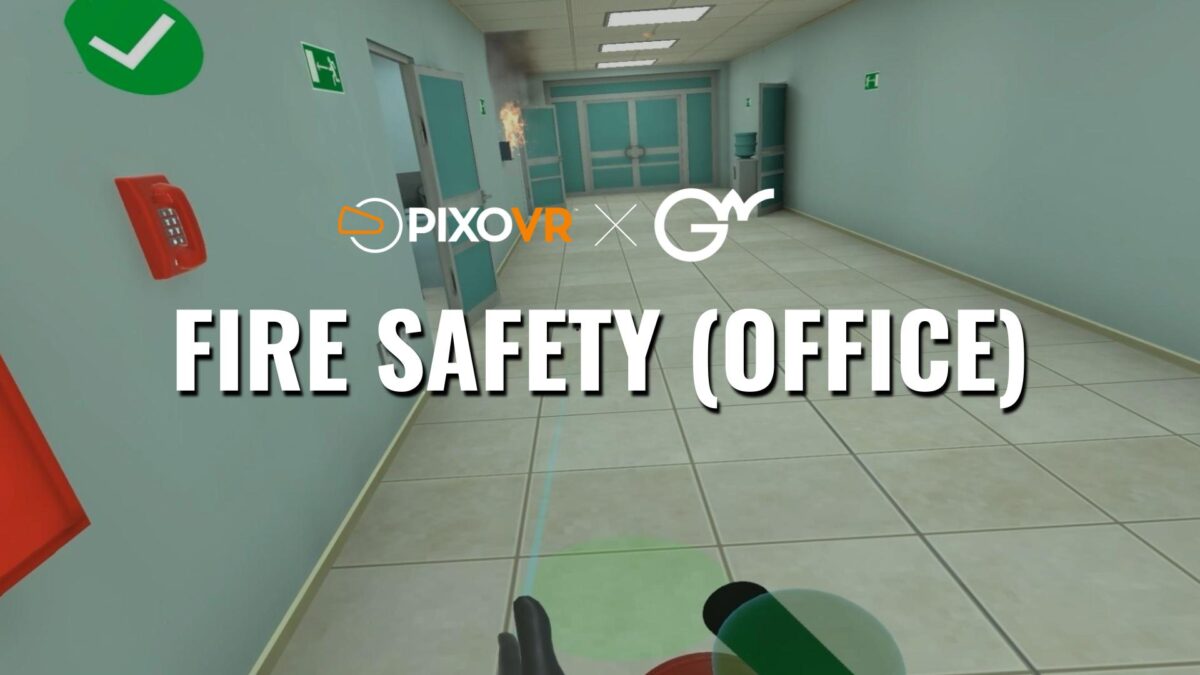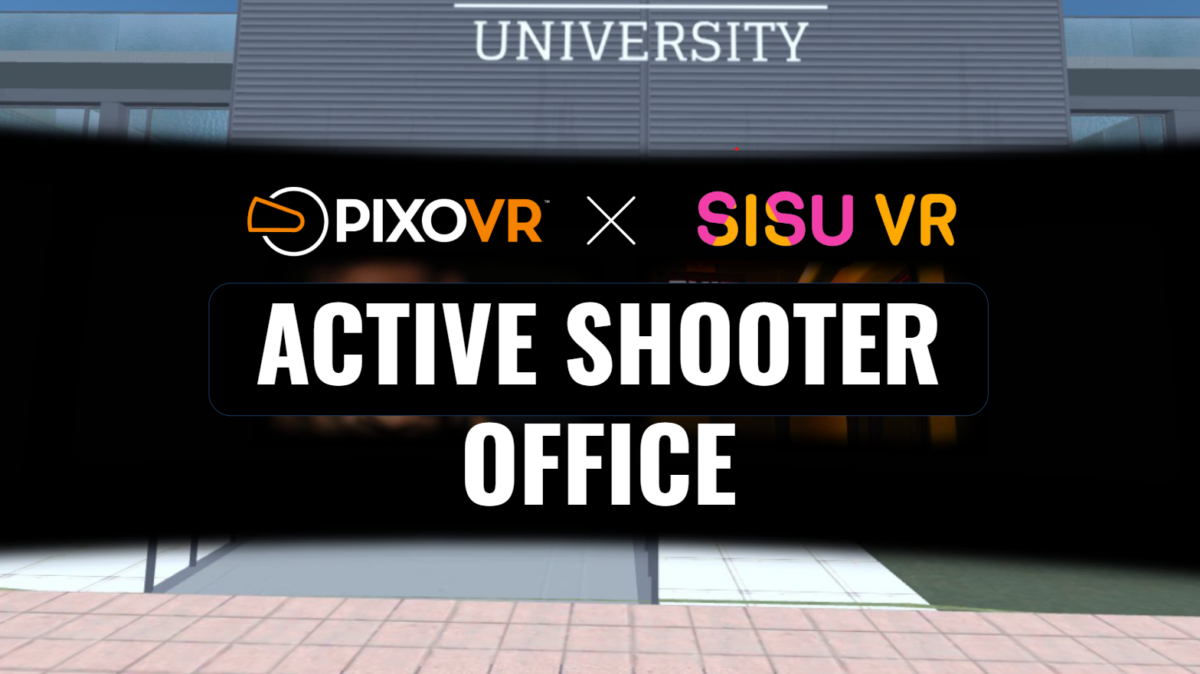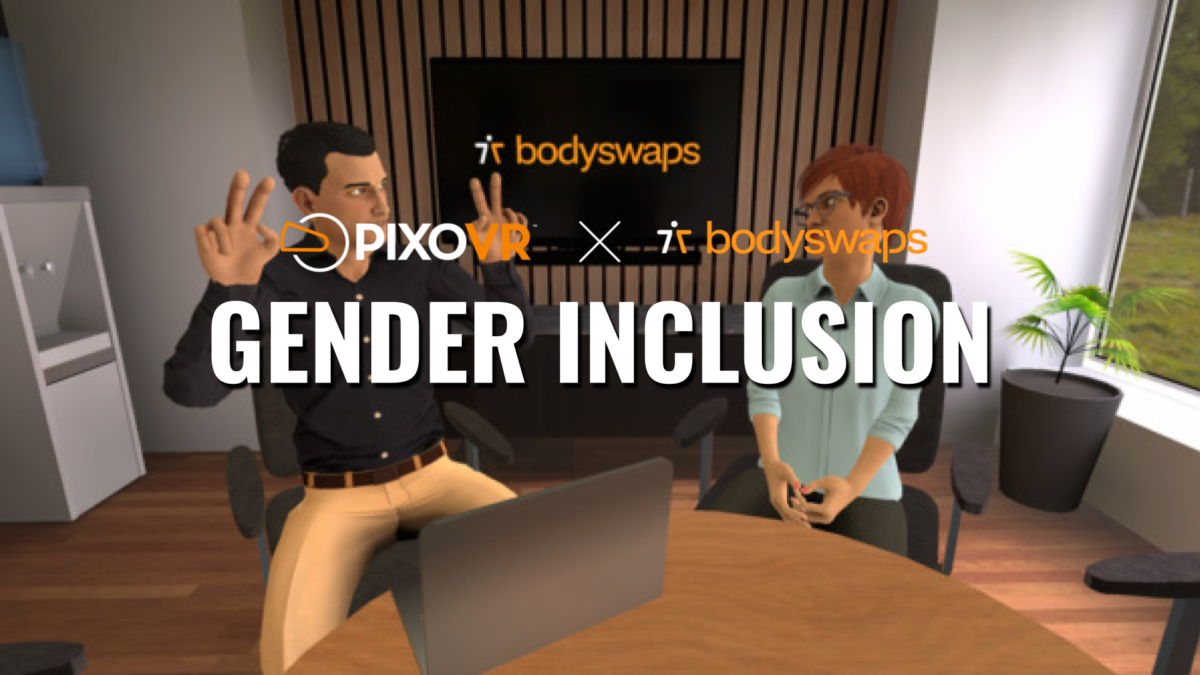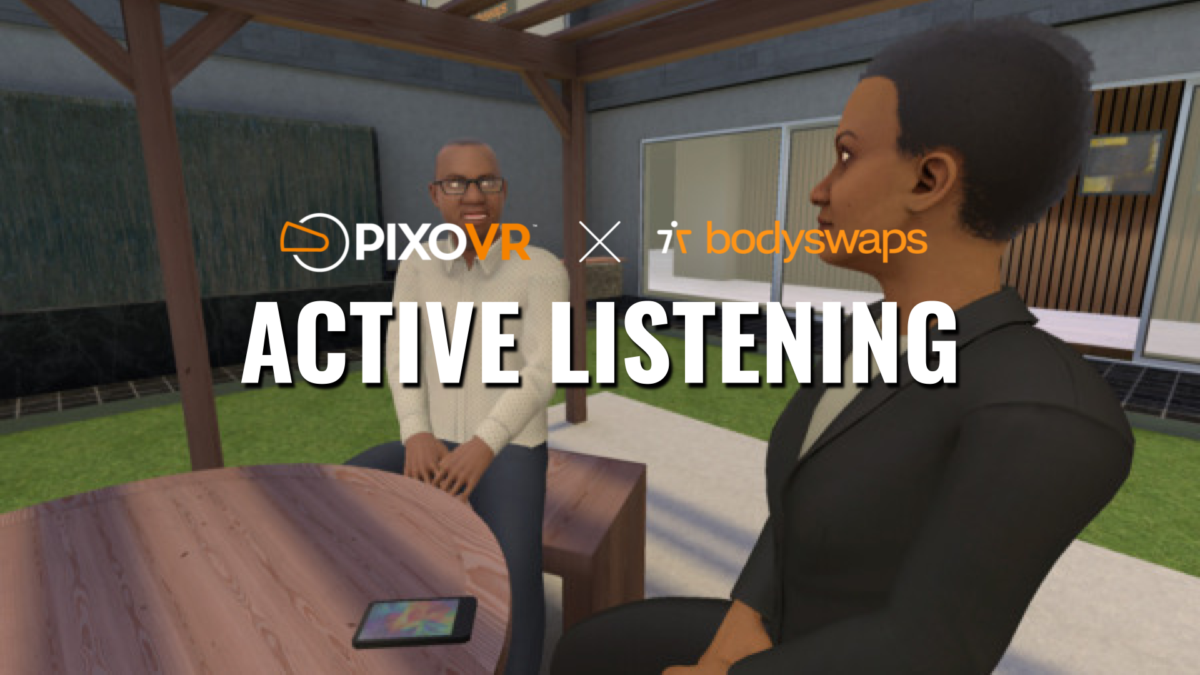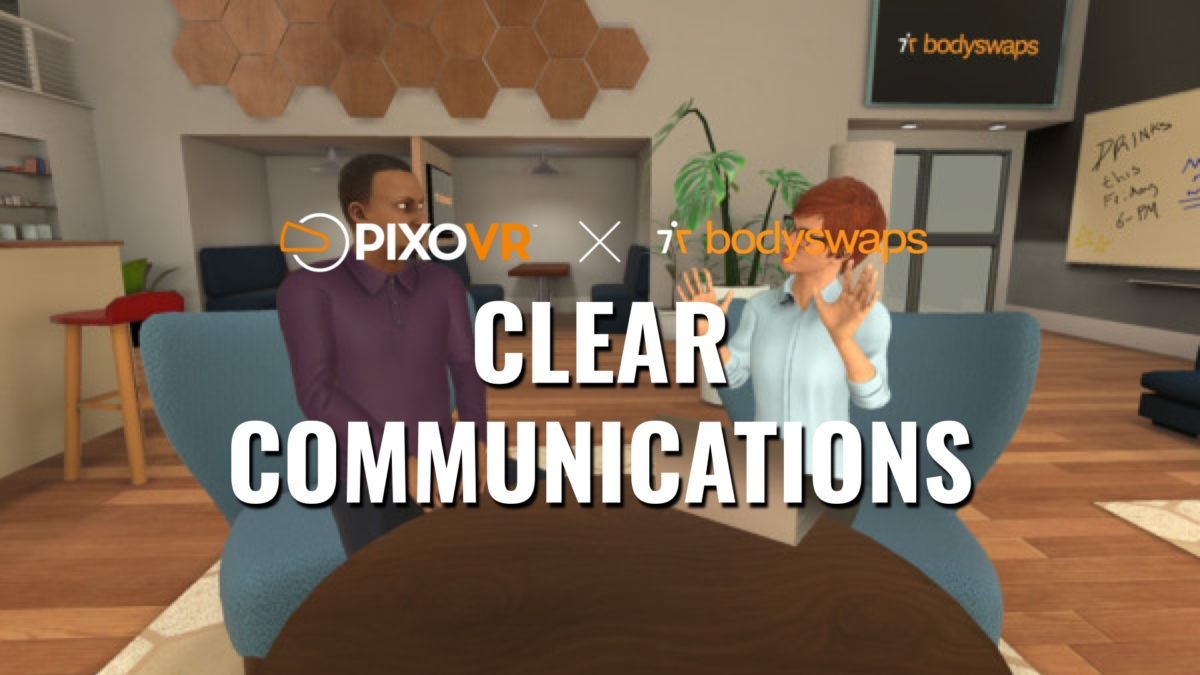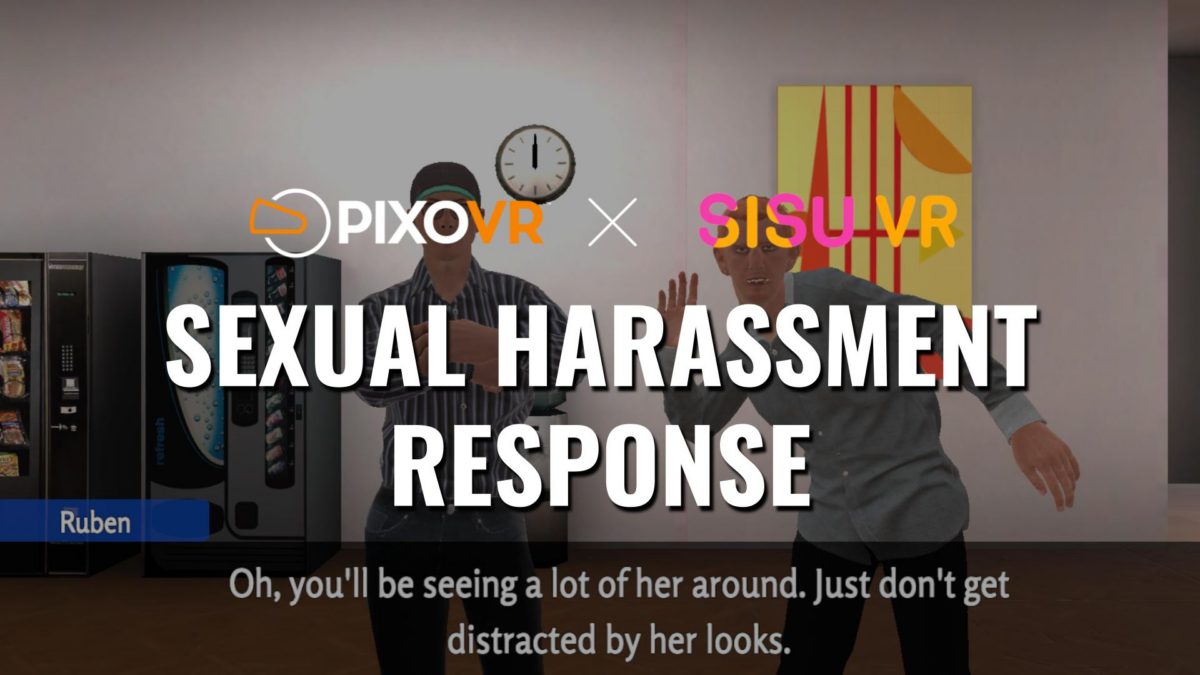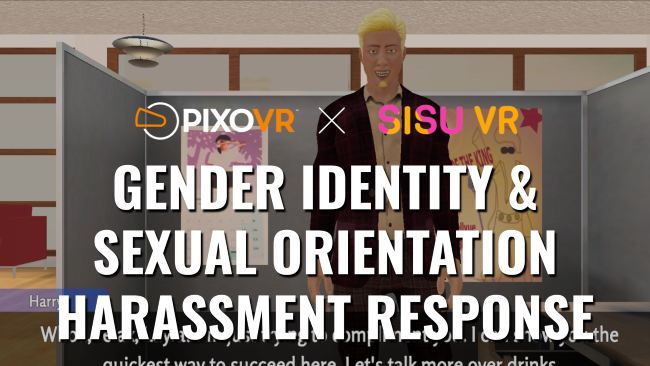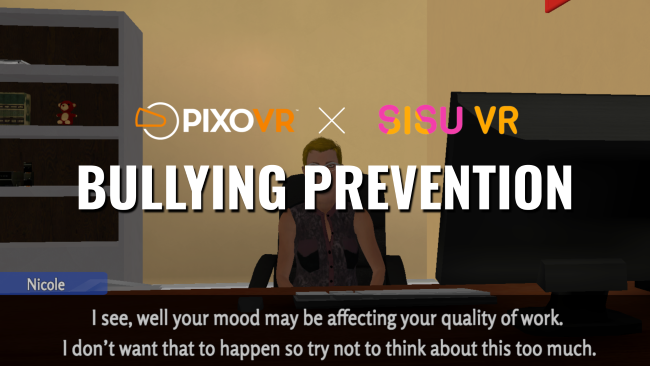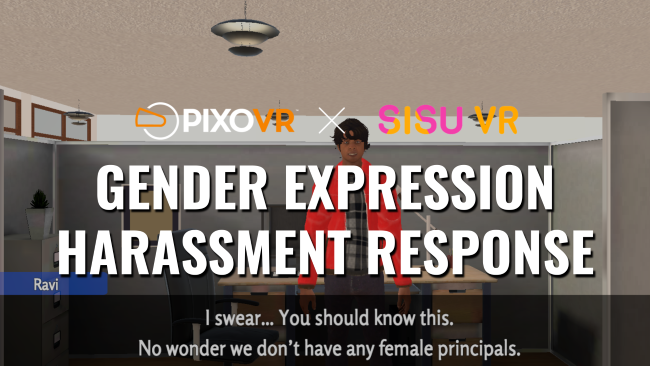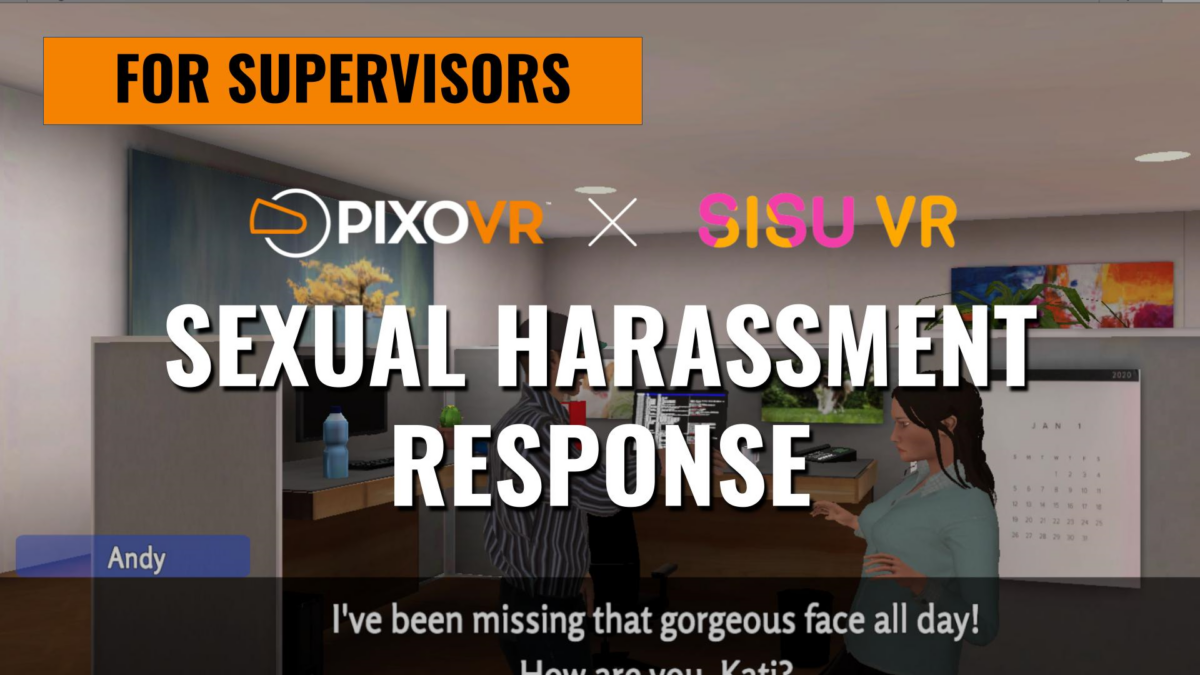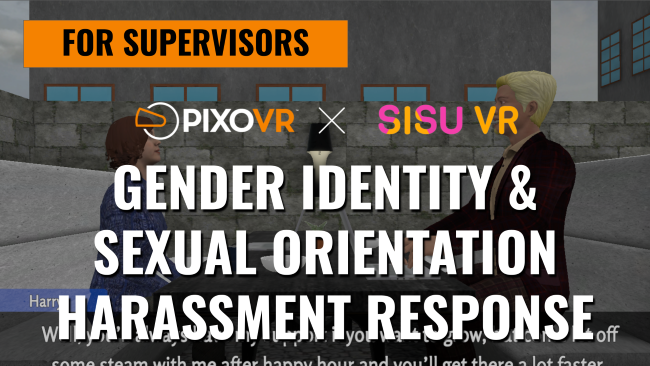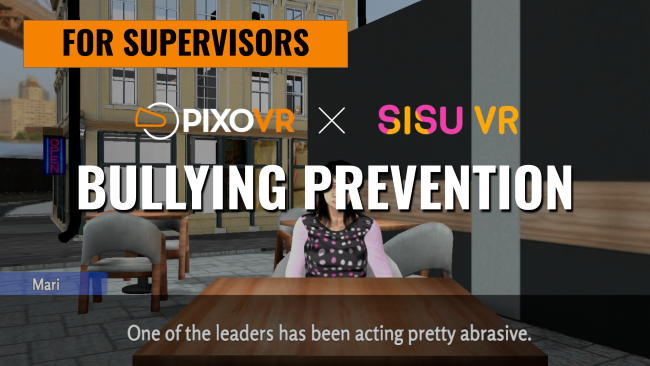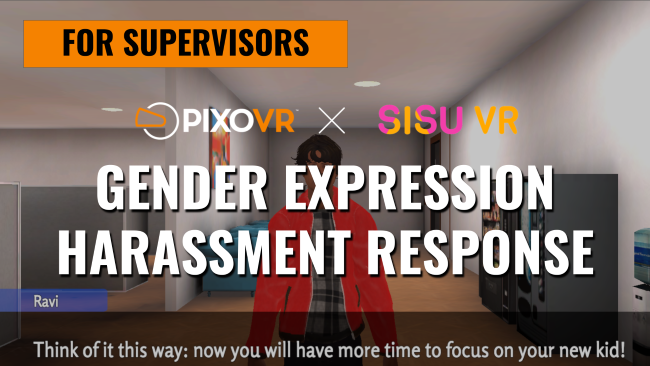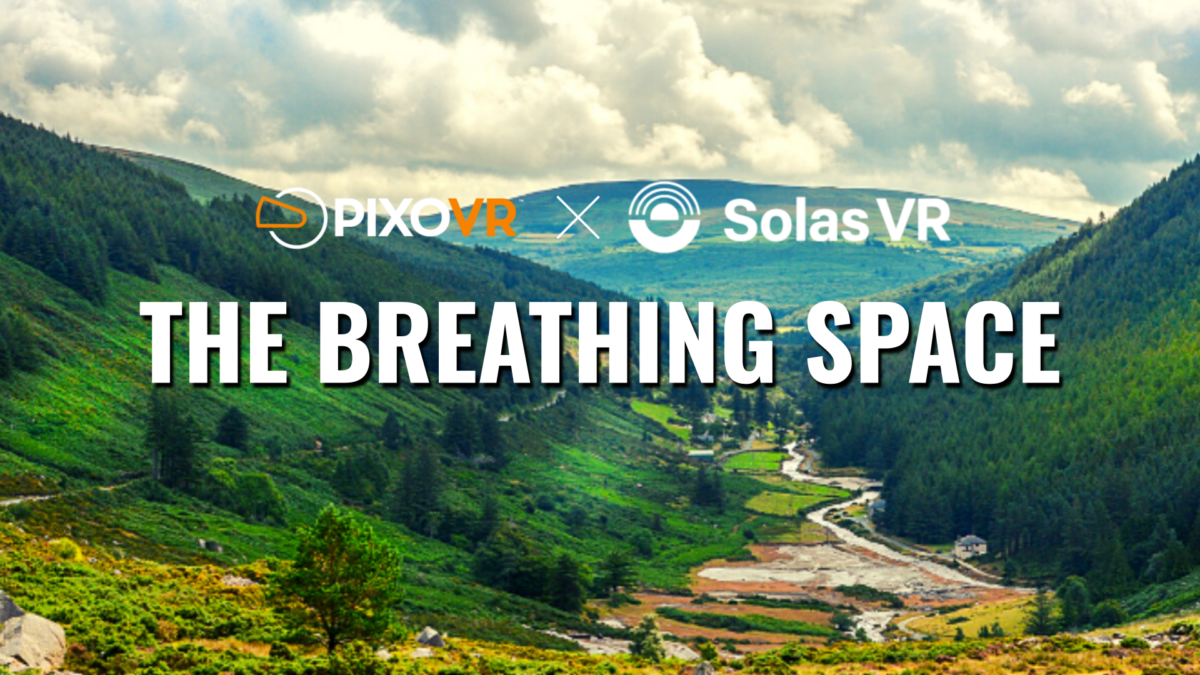5 Ways VR Training Helps Companies Even in an Economic Downturn
5 Ways VR Training Helps Companies Even in an Economic Downturn
A Note to Learning and Development Leaders From Pixo VR CEO,
Sean Hurwitz:
I speak with training leaders like you every day. You are doing amazing things at your organizations as you work to bring real value for onboarding, upskilling, and developing your people. That said, your companies are also facing some significant challenges. Many of you may be struggling with skilled labor gaps. Employee turnover is a problem, plus now you’ve got ‘quiet quitting’ to deal with. It is a constant battle to get leadership bought-in to training, let alone getting employees engaged with the important training material.
If economic conditions worsen, it is likely your budgets will be cut, which will magnify the above problems you’re already facing.
The good news is that for as many struggles as we’ve heard in initial conversations, we’ve heard many more stories of amazing success once L&D leaders embrace virtual reality (VR) training. In this paper, we are sharing both those pains and successes with you so you can make a case for VR for your organization.
We’ve grouped the case points around five major benefits of VR training that the companies we’ve worked for are looking for and eventually realize with VR training. These are:
- Reducing the costs of training
- Improving employee safety
- Overcoming the skilled labor gap
- Keeping employees engaged and retained
- Improving employee culture and job satisfaction
There are cost savings and productivity gains in all of these areas that we have done our best to explain and quantify with real-world examples. I hope you find it valuable and if you’d like to dive deeper in any area, you can reach out to me on LinkedIn.
Regards,
Sean Hurwitz
CEO, PIXO VR
Download the whitepaper PDF
Includes client spotlights, VR efficacy statistics, and more!
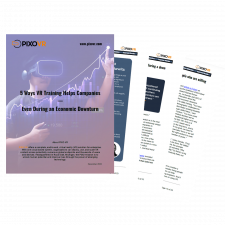
The Importance of Training Employees—Even During a Down Economy
During hard times, employees and shareholders all feel the pain. First comes the budget cuts (often to internally focused departments like HR and learning and development). Open positions go unfilled and headcount reductions may also happen. Then the employees left are overworked and burnout. It’s a story that has been played out many times across generations. The Aspen Institute recognizes this trend, “In far too many organizations in which economic downturns trigger budget cuts, learning and development funding is among the first to go. While it’s easy to understand why reduced revenues necessitate heightened cost-consciousness, halting investment in upskilling is a strategic misstep that deprives organizations of key opportunities they could exploit during a recession.”
However, if an economic downturn is in the near future, it will be happening at an extremely unique time with new variables for companies to consider. Specifically, our next economic downturn will occur in the fourth Industrial Revolution. This is a time characterized by greater workplace presence of artificial intelligence and work automation. One of the outcomes of this period of time is the ease for employees to switch jobs or even restart in a new career. According to Forbes, 47 million Americans left their jobs in 2021. And that trend hasn’t stopped in 2022.
Research from McKinsey & Company revealed that 40% of employees are likely to leave their job in the next six months. The study also revealed that the top reason people left their jobs last year was a lack of career development and advancement.
So what does that mean for companies?
Employee Turnover Rates Expected to Be High and Costly
In a time when technology makes changing jobs easy, companies need to in turn embrace technology that can help retain talent to keep productivity high and costs low. The Aspen Institute agrees. “The organizational benefits of continuing to upskill workers during a downturn are readily apparent. When employees have diverse skills that allow them to adapt to changes in business needs, productivity, performance, and customer service are less likely to suffer ill effects.” They also note that training is a “constructive, forward looking activity that provides hope to participating workers.”
And perhaps most importantly, the Institute commented that companies that invest in learning and development during an economic downturn “are taking a conscious step to remain among those most able to communicate a strong employer brand and compete for top talent during times when wages and other benefits are likely to remain stagnant.”
It equates to higher costs and lower productivity. According to the Center for American Progress, the total cost of turnover (hiring, training, productivity gap, etc.) is estimated at 10-30% of an employee’s annual salary. That said, this cost is likely much higher in a competitive job market. Additionally, this cost doesn’t consider the toll on morale and workplace productivity when a team is understaffed.
A Gallup study of high-performing workplaces showed that companies that make a strategic investment in employee development are twice as likely to retain their people, while also increasing profitability by 11%. In a period of rapid change, talent development is essential for remaining relevant, closing the skilled labor gap, and retaining employees. David Blake, the cofounder of Degreed told Forbes, “We do see that training budgets in previous recessions have gotten pulled back. Even as we head into this potential recession, that equation is different, where the premium on skills and learning and on talent and investing in that talent, I think, is continuing to go up.”
The Benefits of Using Virtual Reality (VR) for Employee Training
Virtual reality (VR) is being used to fill a gap in employee training today. Specifically, VR excels at creating life-like experiences so that employees can learn in a more hands-on approach. During a VR training session, a trainee enters a 360° active learning environment, experiencing sights and sounds that simulate real-world locations and situations. Using the headset and controllers, trainees look, speak, and move about freely in a 3D virtual setting, interacting with simulated real-world tools, machinery, and other trainees and instructors.
Companies are finding that VR training is an excellent way to assess training retention when combined with classroom, video, or e-learning materials. But VR training is also a highly effective way to train on many subjects as research studies continue to prove that learning retention is higher and time to train is shorter.
Research Studies Show VR Training Is Highly Effective
- 75% is the retention rate of VR training in schools, beating out lectures (5%), reading (10%), and audio-visual learning (20%) – National Education Association
- 8.8% was the average increase in memory recall using VR in a study comparing VR and desktop learning – University of Maryland
- 12% higher accuracy and 17% faster time to completion was the result of a skilled labor study using VR training versus instructional video – Accenture
VR training isn’t just being used to teach hard skills. HR leaders are finding it incredibly effective for simulating difficult conversations in a “safe environment”. Being able to practice responses and have real communication with people of a different race, gender, religion, etc. is extremely powerful. And a Pwc study on using VR for soft skills training has more than validated this as a critical component for corporate learning.
PwC Study Shows VR Is More Effective for Soft Skills Training
- VR learners train 4x faster compared to classroom training
- VR learners are 275% more confident to apply skills after training
- VR learners feel 3.75x more emotionally connected to content than classroom learners
- VR learners are 4x more focused than e-learning peers
The Pwc study also looked at the economics of VR training for soft skills and found that VR learning is more cost effective than e-learning when training 1,500 or more learners. And more cost effective than classroom learning when training more than 375 learners. Of course, their analysis only compares the cost of the training content and equipment. Additional cost savings can be realized from factors like:
- Reducing the time to onboard or to complete the skills training
- Eliminating or reducing the need for expensive equipment to be used
- Eliminating or reducing the travel costs for instructors and trainees
- Eliminating or reducing the need for job shadowing
- Reducing the skilled labor gap and filling open positions faster
- Improving worker safety, thereby increasing productivity and reducing disability and/or OSHA costs
- Lowering costs of employee turnover by improving culture, engagement and wellness
- Improving the ability to identify job competency sooner
Companies Are Turning to Virtual Reality to Improve Training Outcomes
Many companies are moving fast to incorporate VR into their learning and development programs and seeing amazing results. Here are a few well-known examples:
- Walmart saw a 70% improvement on test scores for workplace tests after using VR training. They also saw a 30% increase in employee satisfaction with training.
- DHL Express uses VR training to boost efficiency in Unit Load Device (ULD) stacking and safety where 90% of employees said VR is helping them improve efficiency and work better.
- Intel uses VR training and 94% of trainees ask for more VR training content. They also project the 5-year ROI of a single VR-based course could reach 300%.
The evidence is clear that VR training is a great investment, but should it truly be prioritized during an economic downturn? Keep reading for five big benefits that are true during a good economy, but especially impactful in a struggling economy.
Benefit #1
Do More With Less—How VR Can Reduce Training Costs
Training can be very expensive. Particularly when a company needs to replicate real-life situations that require production equipment to be shut down or for the trainees or trainers to travel to a specific location. Sean Hurwitz, CEO of PIXO VR, was interviewed for this paper to share his experience with companies who have found value by investing in VR training. And training costs are a big source of pain for the companies PIXO VR works with.
“Training costs are a real problem for companies these days,” says Hurwitz. “This is often because replicating real life and the environment that they’re going to be in in the field is very hard.” To overcome this, companies use many different approaches today. Some have built specialized training facilities, some ship equipment all over the world, some send their people to travel to specific locations. These are all very expensive approaches.
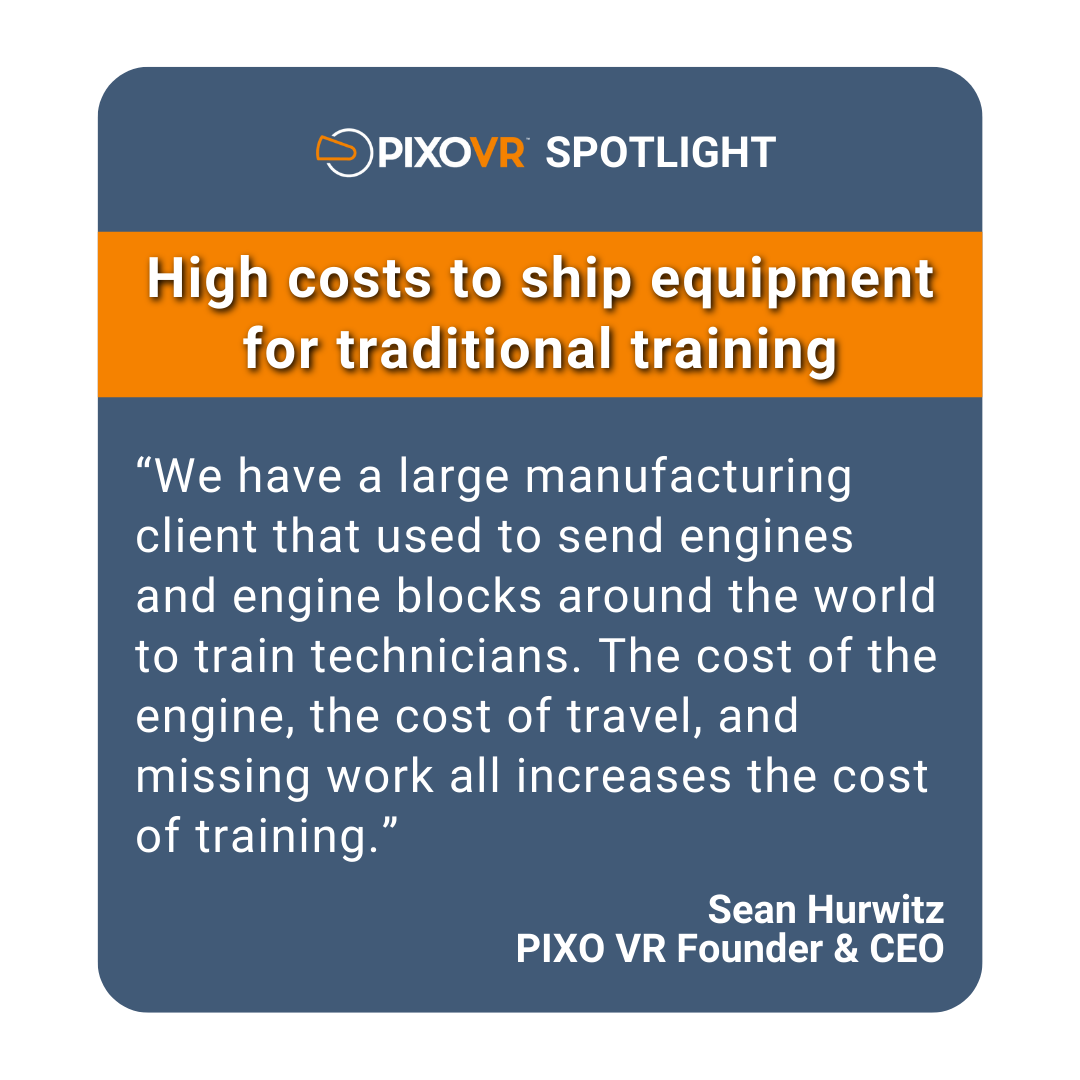

Training Risk Equates to High Costs
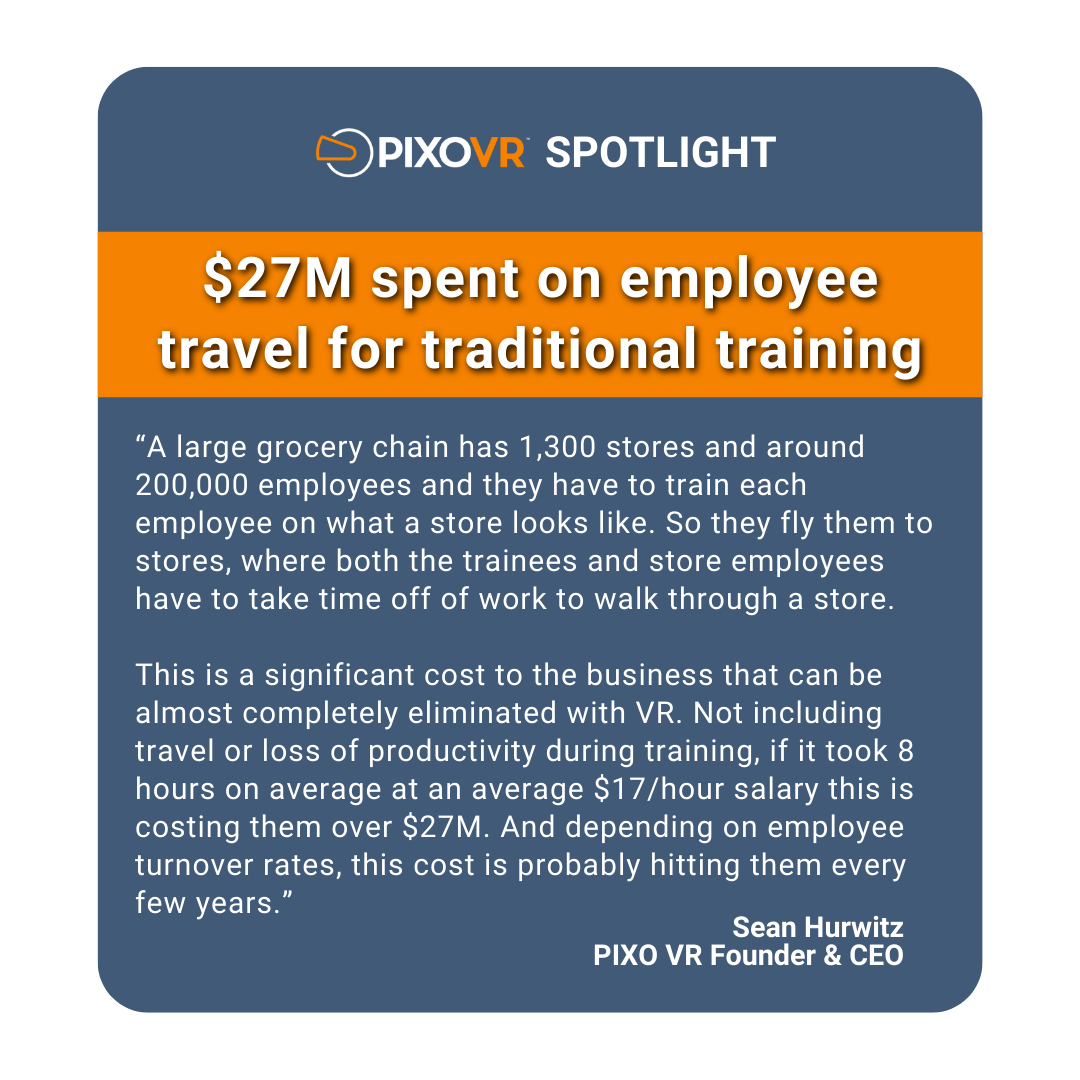
“Industries that typically feel this pain of costly training are industries where risk is involved,” explains Hurwitz. “Risk can be in terms of safety and the importance of doing a critical job right like in manufacturing, energy, utilities, and construction. But there is also the risk of losing a customer. Like a fast food chain that packs a bag inaccurately may lose a customer with a high lifetime value.” Hurwitz also shared some specific examples of the high expense of employee training that VR training can significantly reduce or eliminate.
With virtual reality, companies can significantly reduce these costs. Additional examples of companies saving costs with VR training come from Boeing and JetBlue. Boeing realized a 75% reduction in equipment training time with VR training thanks to higher engagement and material retention with VR. JetBlue Airline was able to replace hands-on technician training (which involved renting an aircraft at a significant cost) with VR training.

VR Training Can Reduce the Training Costs Associated With:
- Travel - travel costs of both instructors and trainees
- Equipment - using production equipment in training
- Shipping - shipping costs to send specialized equipment to locations
- Facility - investing in a specific facility for training
- Productivity - time lost from travel and/or the length of time to train difficult concepts with traditional training methods
- Re-training - the need for frequent re-training due to lower retention rates
Beyond saving money on existing training where risk is involved, VR training also opens up the door for training employees on workplace scenarios where the expense is too high and the experience too risky to even hold training. This includes scenarios such as emergency protocols and disaster preparedness, hazardous material spills, or realistic heights training. With VR training, this type of training becomes vastly more practical, cost-effective, and safe in an immersive simulation.
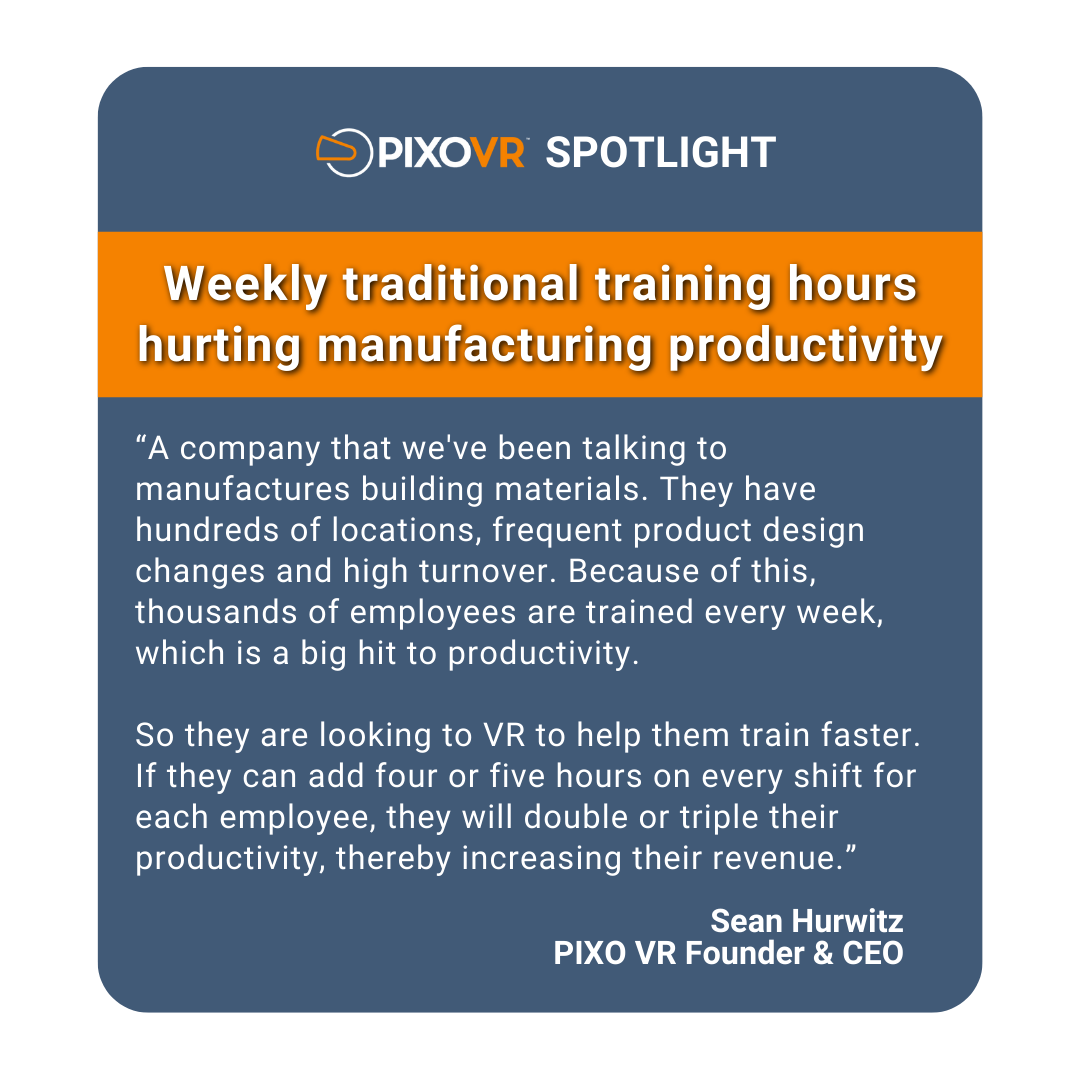
Download the whitepaper PDF
Includes client spotlights, VR efficacy statistics, and more!

Benefit #2
Improve Workplace Safety to Reduce Costs and Keep Employees Productive
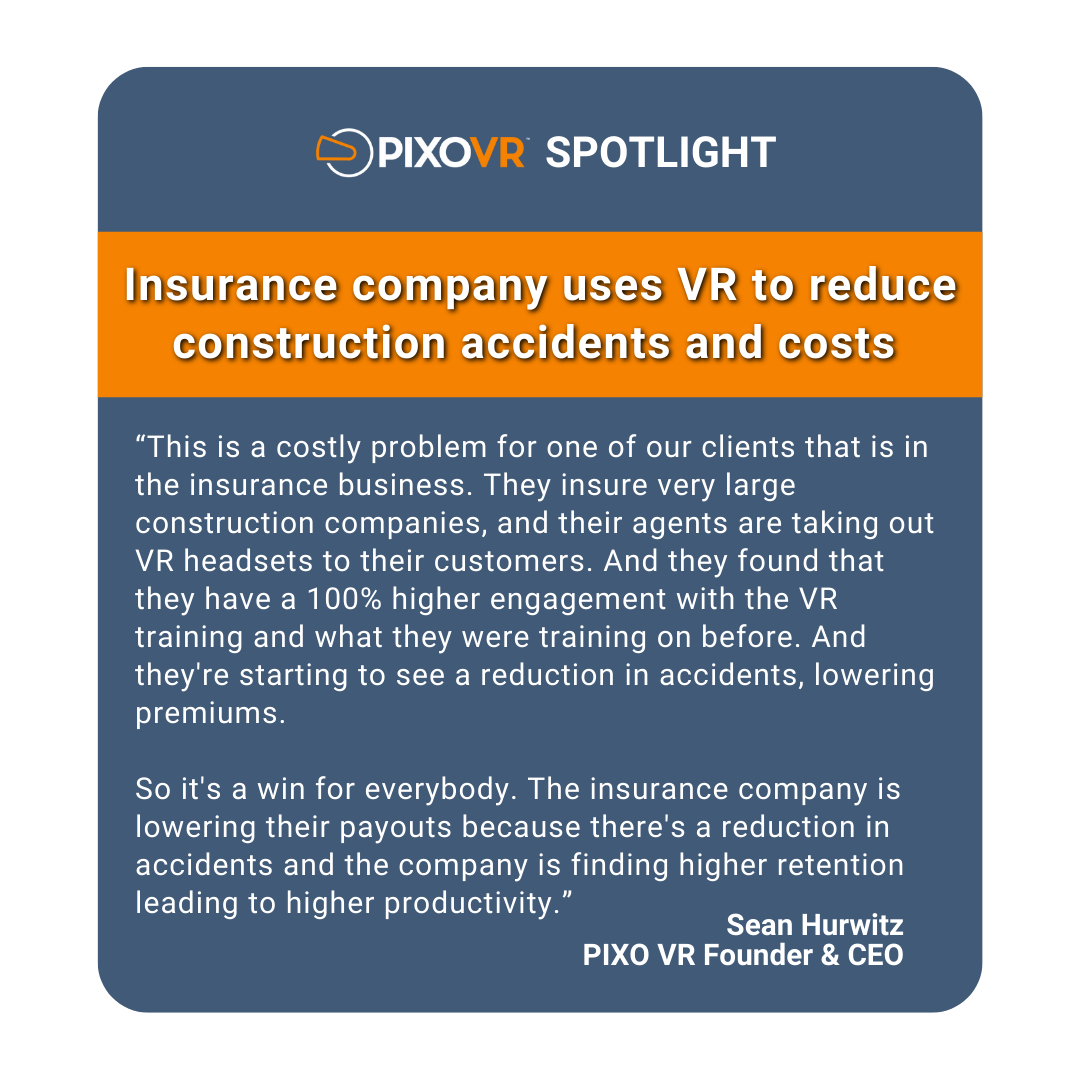
VR training is clearly cost effective in simulating real-life scenarios where risk is involved, but it is also extremely effective for learning because an employee can practice their reactions and responses. Employees are much more likely to be able to avoid an accident or react appropriately in a safety emergency when they have been able to practice behaviors.
VR training has also been proven more engaging, which helps employees better learn to prevent unsafe situations by removing hazards from the workplace. A study presented at the Minesafe International Conference revealed that a mine saw a 43% reduction in lost time from injury since the introduction of VR safety training.
And workplace safety is critical for companies in any economy as it relates to their bottom line. Effective safety training can reduce accidents and liabilities, which saves money on disability pay, workers comp, and OSHA fines. It also keeps employees working, which is critical when there is a gap in skilled labor or when in a hiring freeze.
Hurwitz agrees, “Safety training is so important for companies today because due to the lack of skilled labor, many companies are putting new, untrained employees into the field. This significantly increases risk, leading to higher costs. And using VR is important because a much younger workforce doesn’t learn the same way the older generation did.”
Companies Are Already Using VR to Improve Safety Training
Virtual reality has been applied to safety training scenarios for over 10 years so there are many examples of companies improving workplace safety with VR training, but here are a few worth noting.
- Verizon found VR safety training was significantly more effective than classroom training and now uses it for 22,000 front line employees across all 1,600 US stores.
- Telstra realized a 50% reduction in the direct time required to complete staff safety training and VR remote training allowed them to stay compliant during Covid restrictions.
- Amerisure uses VR safety training to improve outcomes with construction policy holders, which has been well received and seen as an asset to supplement classroom training.
Investing in safety training makes employees feel that their employer cares about their well being. This can help keep employees happy and improve retention during a tough economy. The importance of employee training and development in the workplace is always a need when it comes to safety. The last thing a company should do in any economy is stop safety training. But even more so when there are lots of skilled labor gaps and budget cuts, safety training using virtual reality can save money and keep employees productive.
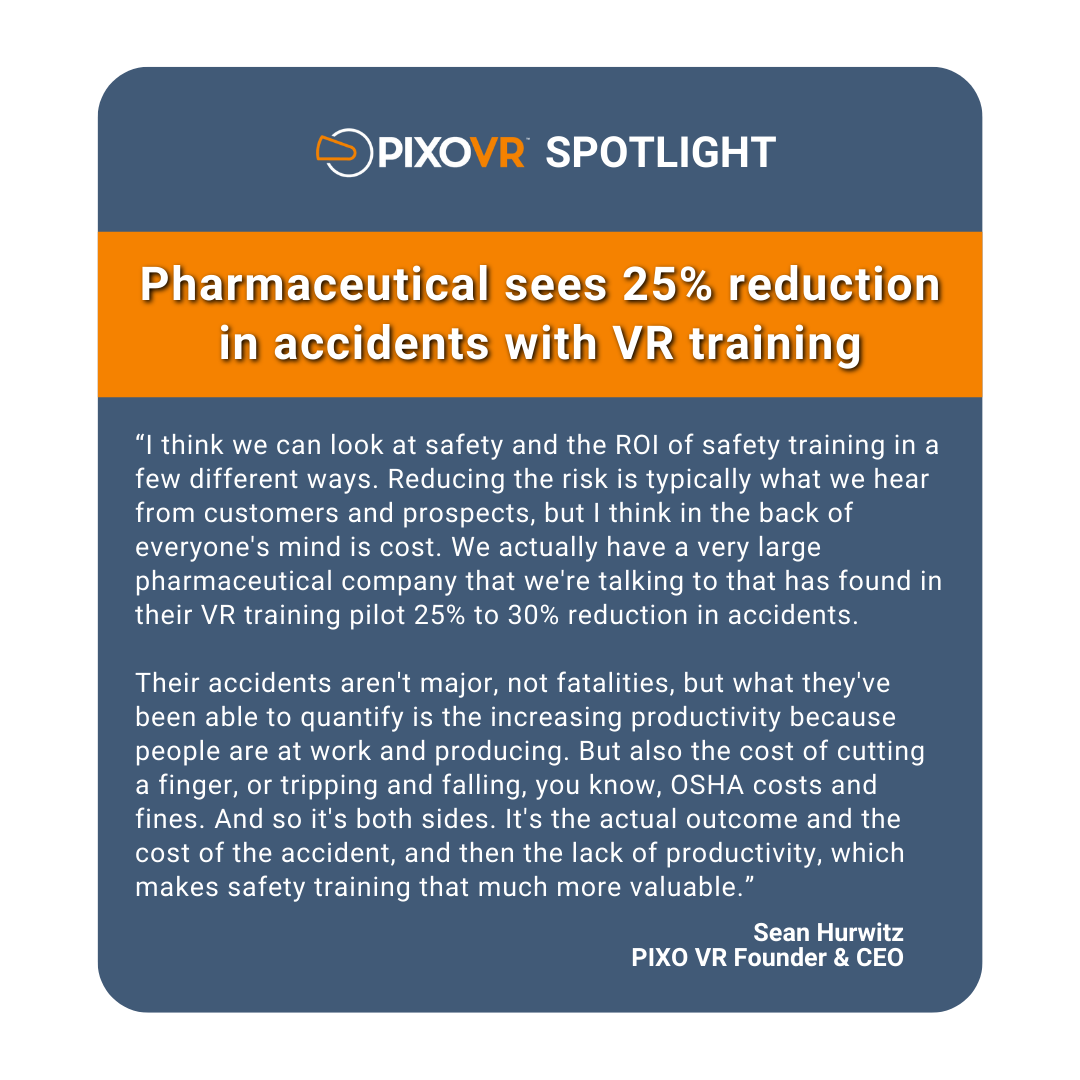
Benefit #3
Easily Fill Open Positions With Unskilled People Who Are Willing to Learn
A recent article in Forbes on ‘finding the workforce of the future’ interviewed Rachel Romer Carlson, co-founder and CEO of Guild Education about the potential economic downturn relative to skills training. “You have huge demographic challenges for the United States pointing towards not enough skilled labor,” said Romer Carlson. “You have some of the greatest declines we’ve seen in traditional higher ed in any year in the last 100. And so if you’re an H.R. leader who’s thinking on the long term, you’re saying ‘Oh my gosh, we need to train our own labor force or we will not have the right workers to work here in a number of years.’”
“According to our customers, the skilled labor gap is due to a few things,” notes Hurwitz. “First, with a younger workforce, especially with Covid changing the way things are done, the skilled labor were able to go get higher paying jobs doing different things. Second, the younger workforce have other options. They’re more technical. They’re able to work remotely. Why would they need to go out onto a construction site or into the field of a utility? So there’s a big gap for these companies hiring. VR and AR provide an opportunity for somebody that’s not experienced in the field, construction or a utility.”
Leaders Need to Hire Learners and Use VR to Upskill
The skilled labor gap isn’t going away anytime soon, so hiring leaders need to consider a different approach. In an economy where they can still hire, they need to consider hiring people based on their willingness to learn. Virtual reality employee training programs can help employees learn the skills needed to do the job faster than traditional training programs. And if economic conditions force a hiring freeze, learning and development can focus on using VR training for cross training and retention. A study done at Iowa State University and published in the Welding Journal revealed that 100% of welding students who used VR training performed better on weld testing than students receiving traditional training. When looking to upskill workers effectively, VR training is the smart choice.

Warning: Ineffective Upskill Training Increases Costly Mistakes

Unfortunately, many companies are experiencing additional costs when trying to up-skill new employees using traditional training methods. Hurwitz says these costs can be extremely detrimental to bottom line revenue. “Where we see the skilled labor gap creating havoc is redos—mistakes that cost money to fix.” Hurwitz goes on to say that, “Ineffective training a lot of times leads to some of these mistakes. When our customers are bringing unskilled labor and having to push them into the workforce without the appropriate training. And we found that large companies are still spending billions of dollars on ineffective training. And now with the lack of skilled labor and the shortage, they need to teach a skill and train employees and they don’t really have the time.”
“Traditional training has been ineffective for many age groups, but particularly the younger workers,” says Hurwitz. “ Nobody wants to sit in the classroom. Nobody wants to read a PDF anymore. You know, 16, 17 year old young adults are given a 20-page manual and that’s just ineffective. And so the mistakes are coming from, in some cases, pushing new employees, onboarding them too fast in an ineffective manner. Which in turn causes mistakes that end up causing injury and higher costs in redos.”
Onboarding and Upskilling Outcomes Are Better With VR
There are many examples of companies improving workplace safety with VR training like Chick-fil-A and General Dynamics. But here are a few more companies that are onboarding and upskilling effectively with virtual reality employee training:
- Homegrown restaurants saw a 27% increase in the success of employee onboarding using VR training.
- United Rentals saw a 50% reduction in the time to train employees when using VR training.
- Airbus uses VR to optimize maintenance via simulated protocols. The use of VR technology has enabled Airbus to reduce the duration of maintenance processes by 25%.
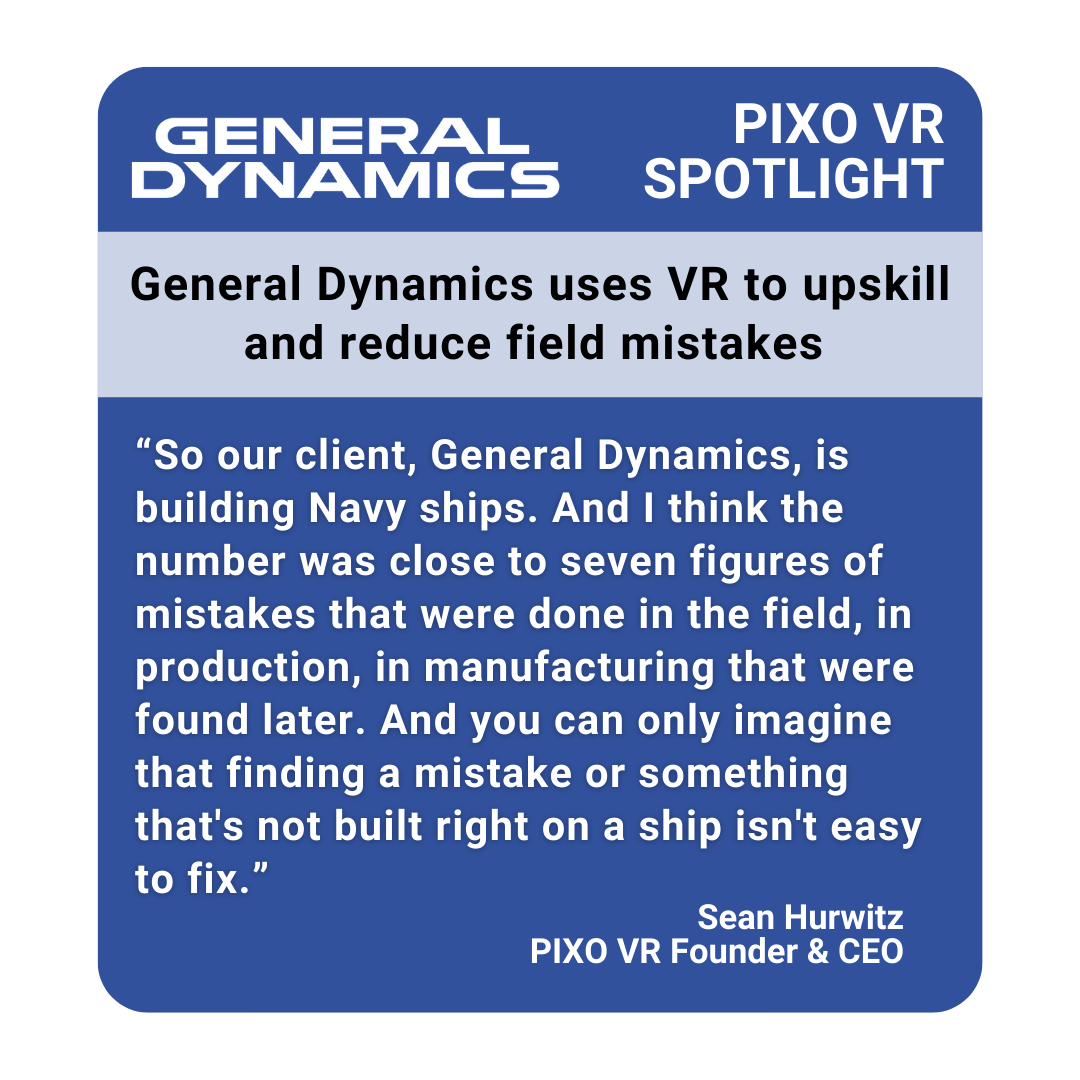
Download the whitepaper PDF
Includes client spotlights, VR efficacy statistics, and more!

Benefit #4
Keep Employee Retention High During a Tight Job Market
A research study executed by Zenefits of 600 US businesses revealed that even in a strong economy like when the study was performed, 81% of business owners agree that turnover is a costly problem. And 63.3% of companies said that retaining employees is actually harder than hiring them. Approximately 100K-120K people quit their jobs daily in the US. The research results also revealed that this is having a big impact on the business with 79.3% saying that turnover is detrimental to growth and 78.6% saying it negatively impacts productivity.
Experts agree that as we head into a possible economic downturn, it is more important than ever for companies to invest in retention strategies. Maurice Jones, CEO of OneTen, was recently interviewed for a Forbes article and says training is key. It’s really about a skills-first culture,” said Maurice Jones. “Something that impacts everything that you’re doing—how you’re training your managers, what incentives you’re giving for hiring managers, the transparency of your career pathways, the mentorship, the sponsorship. Are you thinking also about the issues that this talent needs to really thrive?” If you’re not, he said, “then I’m a skeptic. You’re going to have high attrition.”
Research Shows That Learning and Development Is Critical to Employee Retention
Many research studies point toward learning and development as the way to improve employee retention. One study cites that nearly one-third of employee turnover is due to a lack of development opportunities. This means, the more dissatisfied your employees are with the support of their personal growth, the more likely they are to leave. Another study showed that 74% of employees say they aren’t reaching their full potential due to a lack of training. Yet another study revealed that 40% of employees who don’t receive adequate training will leave their job within a year. Companies exploring how to improve employee retention rates need to consider investing in employee training.
Hurwitz says that this is a common concern among enterprises looking into VR training. “I can’t think of a customer or prospect that we talk to that isn’t concerned about the cause and effect of losing talent, losing employees,” says Hurwitz. “They invest a lot of time and a lot of money into onboarding. With all that investment into an employee, just to get them into the field, working and productive, losing them is an absolute waste of money that they’ve already invested.”
In any economy, companies are always looking to save money and employee retention is a great place to look for cost savings. “All companies are looking to save money,” explains Hurwitz. “How do they do that? A number of ways with AR and VR. Being able to retain the employees is a good start because the cost that goes into onboarding a new employee is very, very, expensive. The idea that keeping their job fun in this downturn speaks to retention, but also to saving money and being able to train in what’s been proven three or four times faster.” Hurwitz goes on to explain that the effectiveness of VR training also contributes to cost savings. “VR training can improve material retention by 80%. This leads to higher productivity and longer engagement with these employees, reducing the cost. So in an economic downturn, this should be top of mind for companies. This concept of being able to train in VR saves money all around.”
VR Training Isn’t Just for Better Retention—It’s Also an Employment Perk
There are many VR training courses available that can improve employee learning and development for both hard and soft skills. The underlying commonality across VR training courses is that they are highly engaging and preferred by employees over other training methods.
“We are still finding that prospects and customers are looking for ways to be more innovative, engaging, and more fun to train,” says Hurwitz. “We hear almost daily that VR is a more innovative and effective way to train, but has now evolved into more fun, more engaging, more exciting and stimulating for their employees. Many of our customers use the fact that they train in VR as an employee perk.”
Fundamentally, investing in VR training in any economy can help employees feel engaged and that they are being invested in. Whether it is training on workplace safety, communication skills, or even mindfulness content, employees want to feel that their well-being is important. But they also appreciate it much more if the training is fun. “With VR, you can essentially play games while learning versus going to sit in classrooms,” explains Hurwitz. “I can’t think of a customer that we have that says our employees love to train the traditional way. They love to travel and go sit in a classroom from morning to night. Nobody says that. So VR adds an element of fun and gamification to their traditional training.”
Benefit #5
Keep Employee Productivity High by Improving the Corporate Culture
Hybrid and remote work is now a large percentage of work environments. In an effort to improve retention rates and productivity, companies are exploring how to improve employee morale and engagement as factors in retention. Linda Jingfang Cai, VP of Talent Development at LinkedIn was quoted in an article in Fortune that soft skills are now “the currency of the future workplace.” Things like effective communication, transparency, and empathy are now more important than ever for in-person and virtual exchanges.
The Aspen Institute reviewed a study from the i4cp on upskilling and warned that “discretionary effort that drives performance and productivity in the workplace is even more vital when expectations of employees to do more, combined with the sudden absence of co-workers (perhaps valued friends), put a damper on morale.” Retaining employees is important, but to keep productivity high, companies need to invest in keeping employees happy and improving their communication and leadership skills.
“What we’re hearing a lot these days is further on the engagement, the happiness, and the culture of the employee,” notes Hurwitz. “A lot goes into finding and hiring employees. VR can be used in so many different ways beyond technical training or safety training for things like soft skills training or mindfulness and meditation, diversity training and awareness, all of which I think for employees is a great benefit.”
Virtual reality employee training is amazing at teaching critical soft skills—giving employees a safe place to work through difficult issues like conflict resolution and gender inclusion. Employees can learn and practice reactions and responses without judgment from peers. Investing in soft skills training can also have a positive impact on employee productivity. H&R Block uses VR training to teach new agents soft skills resulting in faster onboarding and 50% reduction in customer hold time due to increased competency in solving issues.

Companies Are Just Starting to Explore the Power of Mindfulness Training
Another application for VR in the workplace is mindfulness training. Employee wellness is an important factor for cost savings that can also improve revenue with higher levels of productivity.
There is VR training content available for things like meditation, breathing exercises, and even positivity. Here are just a few of the benefits of VR training for employee wellness:
- Open-mindedness – Mindfulness practices, such as breathing exercises, are associated with decreased gray-matter density in the amygdala, the region of the brain that initiates a response to stress. This reduces the inclination to interpret an uncertain environment as a threat and thus react defensively.
- Boost productivity – A study in Cognition proved that micro-breaks boost productivity as they prepare the mind to move from one task to another. Training breathing exercises are a simple way to fit an effective micro-break into the work day.
- Improve retention – Studies have shown that the more relaxed people are, the better they listen and retain information. Breathing exercises are a quick way for stressed employees to relax themselves so they can better address what needs to get done.
- Less sick days – Dealing with fatigue is a common topic of self reflection that employees look for help overcoming. With tips and mindful practices, employees feel more refreshed and need less time off from work to recover from burnout.
- Reduced frustration – Many employees today feel isolated and uncomfortable asking for help. This results in frustration and can eventually mean losing good employees. Mindfulness training can provide best practices for asking others for help and reducing frustration.
Download the whitepaper PDF
Includes client spotlights, VR efficacy statistics, and more!

Embracing Diversity Training Is a Must—VR Makes It Possible
Diversity training is one of the areas that many learning and development leaders are working on to improve soft skills in the workplace. Topics like diversity and inclusion are difficult to train on because they can be very sensitive and potentially explosive topics for employees to discuss with one another. Employees need a safe place to learn about these topics and practice dialogue to help them truly change behaviors. Virtual reality is incredibly powerful in these scenarios.
Hurwitz shared an example of an organization that is looking to VR to help. “We spoke to one of the departments of the defense and they have tens of thousands of people or soldiers that they’re trying to teach diversity training to. That’s almost impossible to do in person. That’s almost impossible to do reading a manual or even watching a video. But one of the great benefits of VR is being able to move somebody emotionally. Having somebody experience that sort of harassment or not being included into a conversation or even pointing out to a manager or to a leader how they’re influencing somebody else’s feelings, I can’t think of any other way to do it than in VR.”
Not only is VR incredibly effective for soft skills training, but Hurwitz says that even the simple act of offering training on important topics like diversity can help improve morale and retention rates. “When a company offers diversity training and wellness training, not because they’re mandated to do it (because not many are) it becomes a competitive advantage to do that. Doing it in VR in this type of environment makes it far easier, faster, and better.” Hurwitz adds, “Offering things like diversity and mindfulness training helps with culture because employees feel respected. And this becomes an important part of the company’s culture.”

VR Training Is a Smart Investment—in Any Economy
This paper covered many examples of companies that are turning to virtual reality for employee training to accomplish one or more of the following:
- Reducing the costs of training
- Improving employee safety (which also reduces costs)
- Overcoming the skilled labor gap
- Keeping employees engaged and retained
- Improving employee culture and job satisfaction
Whether faced with a strong economy or a downturn, companies reading this paper should be convinced that:
- Employee training is a critical area to invest in today.
- Even if budgets are tight, companies can reduce costs with VR.
- VR training is extremely effective at helping improve the company’s bottom line by achieving the five benefits outlined in this paper.
Want to learn more about how to bring VR training into an established learning and development program? Get the step-by-step guide.
Want to talk to a VR training expert to determine the best place to get started at your company? Connect today.
About PIXO VR
PIXO VR offers a complete, end-to-end, virtual reality (VR) solution for enterprise. With one cloud-based system, organizations can deploy, use, and scale VR content across potentially numerous global endpoints and thousands of users and devices. Headquartered in Royal Oak, Michigan, the PIXO mission is to unlock human potential and improve lives through the power of emerging technology.

